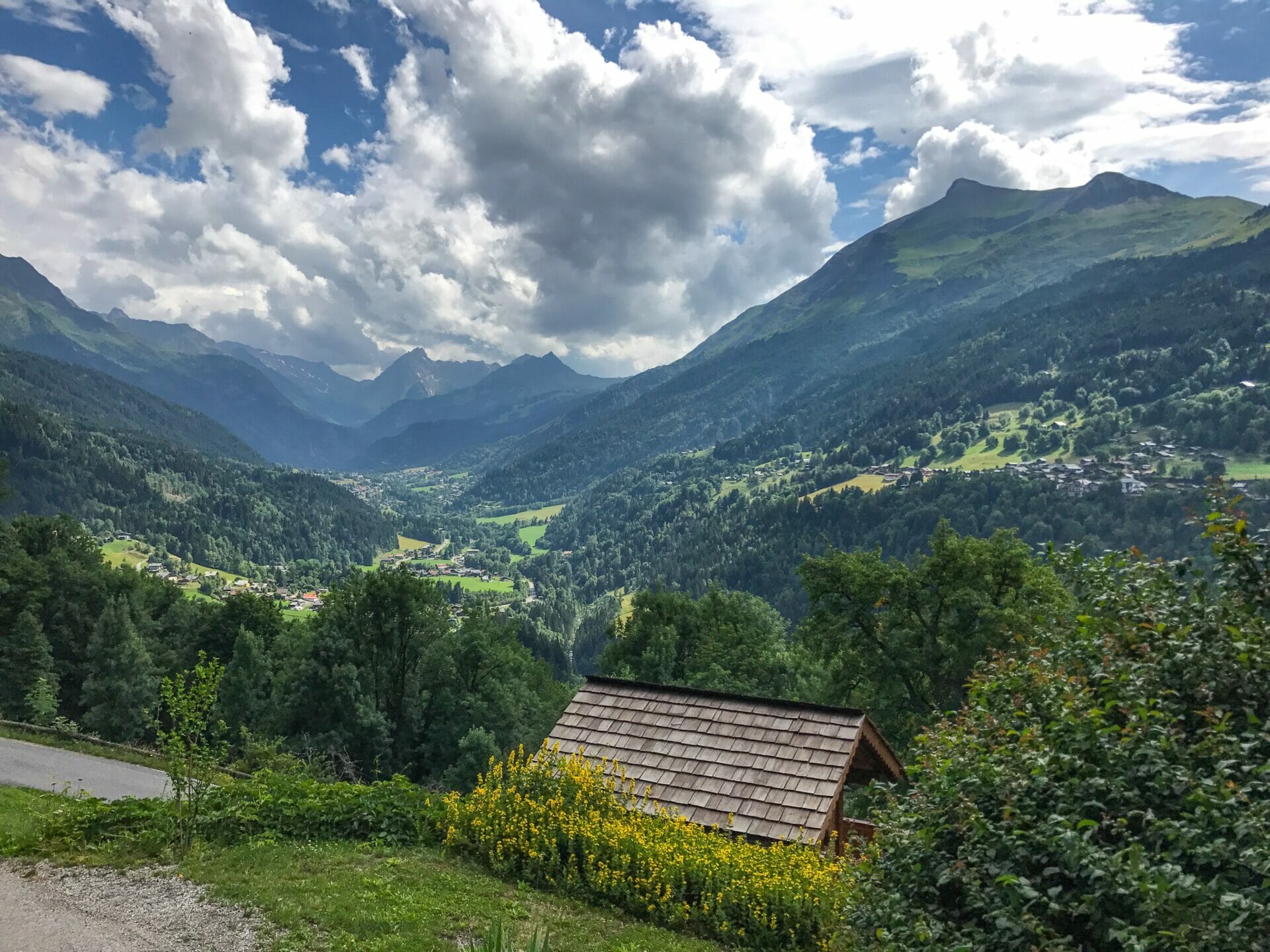
Last Updated on 9 February 2021
Still adjusting to the time change a bit, I silence my 7am alarm and continue to sleep for over an hour before I finally get up and finish the last of my packing that I passed out before polishing off last night. I dig into a delicious fruit and nut loaf that my friend Jess sent along for breakfast, and then Katy and I are off!
Even though she won’t be hiking the entire trail with me as originally planned, I’m excited to have Katy with me today on my first day of the TMB. We are hoping that it will be easy enough for her given the modest elevation gain and the relatively short distance to reach Les Contamines.
The trailhead is a few kilometres from our hotel, so we get a warmup for the hike just by walking across town before we actually reach our first sign and officially begin the trek. Les Houches is truly adorable, and I can’t wait to explore more when I finish the hike and meet back up with Katy!
We walk along the road for a bit before veering off up grass-covered steps to reach a higher road, which we follow steeply uphill for a ways. When we eventually come off the road and onto gravel, the uphill slog only continues and I keep looking at the map in my guidebook to chart basically every single step of our progress.
Katy is having trouble with her pack riding funny on her hips, so it’s a bit of a tough time that is only lessened by the frequent cow and sheep sightings. You can always spot a city girl, because she’s photographing cows like they are exotic animals.. I won’t mention the exact number of times we stopped to take pictures of livestock, but I will tell you that it was about 10 times too many.
 This uphill is probably harder than it should be for me, given that this is one of the easiest days of the trek and we are only gaining a bit over 600m today. But in my defence, I’m still finding my rhythm and getting used to the weight in my pack, while I’m sure Katy is feeling relieved to be hiking just one day with me.
This uphill is probably harder than it should be for me, given that this is one of the easiest days of the trek and we are only gaining a bit over 600m today. But in my defence, I’m still finding my rhythm and getting used to the weight in my pack, while I’m sure Katy is feeling relieved to be hiking just one day with me.
When we do finally reach the top of Col de Voza, we are incredibly ready for lunch and practically throw our packs to the ground in excitement. Much of this eagerness is specifically for the amazing mountain food that I’ve packed and been looking forward to eating for many months now. This afternoon, I am serving up delightful Chicken Cajun Ranch Wraps (sans actual wraps, because I didn’t remember to bring any), and they do not disappoint. Who knew that dehydrated food in a pouch could be so delicious?
While we are sitting and eating, the clouds start to reveal slightly more of the incredible mountains towering over us. I have a feeling that I’d be weeping happy tears of joy if the full view was visible, so I’m overwhelmingly eager to see more of these incredible mountains in the coming days (and cry my happy tears).After our lunch, we fill up water and cross the tram tracks (while staring longingly at the tram itself), before continuing gently downhill towards Bionnassay, a delightful and very French town in the hills. The walk is just under an hour and we are feeling full of energy after our lengthy rest in the grass and a few sneaky handfuls of Skittles, so it positively flies by.
As we pass through these adorable little towns, I keep thinking to myself that everyone in France must have a green thumb. All the little cottages feature immaculate gardens and it’s almost too picture-perfect to believe. Of course, I waste no time in taking 2,000 photos to commemorate each and every picturesque location we pass.
After a wrong turn that we correct within 5 minutes, we continue our gentle descent into Le Champel, which is equally as cute as Bionnassay. Here, we even spot a few French kitties prancing around the gardens, so we have to stop for a few pats.
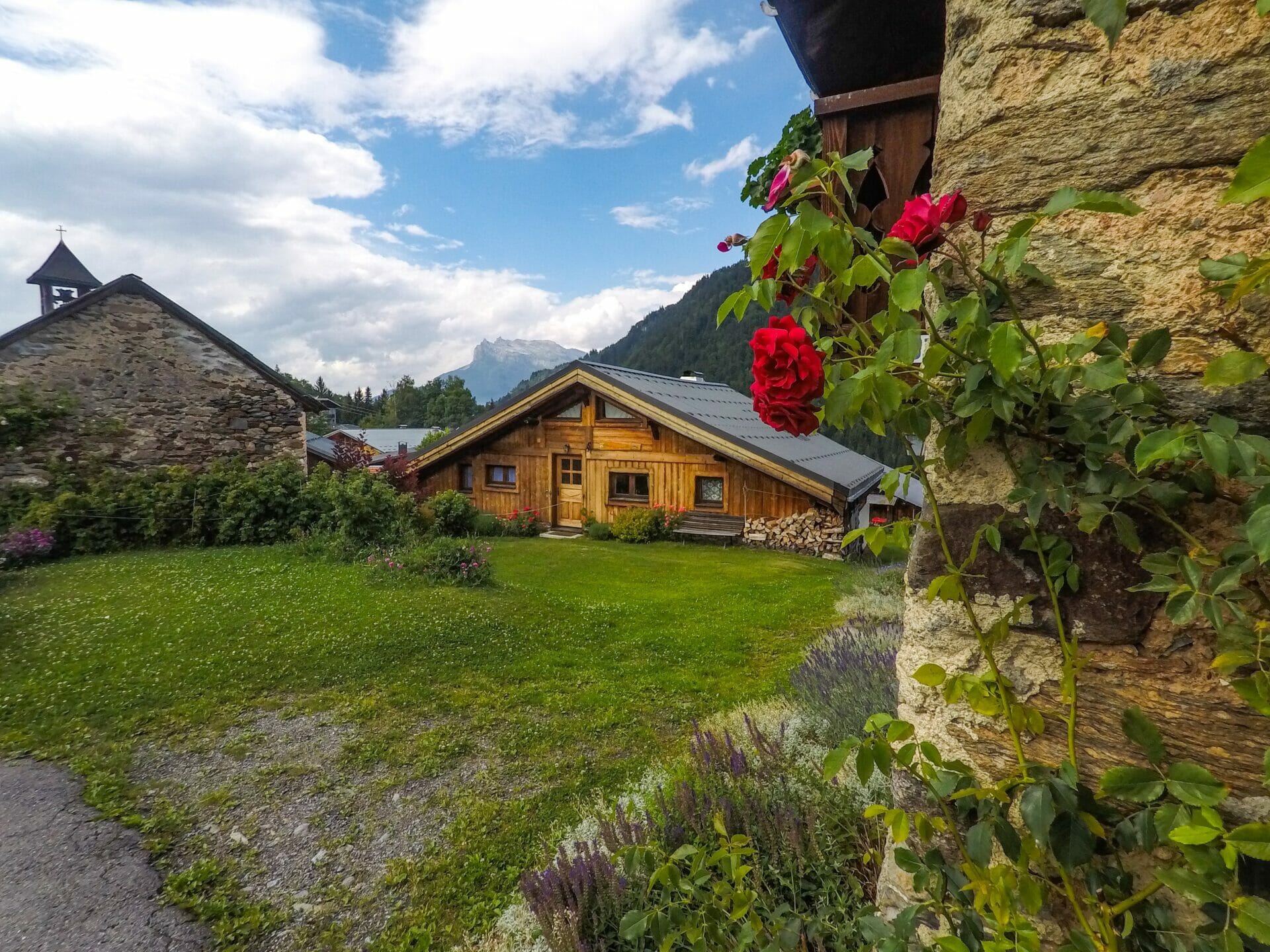 We pass through several more tiny French towns before we reach La Gruvaz and cross the river to continue walking through a lushly forested area that is very PNW. It’s sprinkling by this point and Katy is in agony with her hip and the weight of her pack, so we are trying to hurry to Les Contamines, but that proves difficult.
We pass through several more tiny French towns before we reach La Gruvaz and cross the river to continue walking through a lushly forested area that is very PNW. It’s sprinkling by this point and Katy is in agony with her hip and the weight of her pack, so we are trying to hurry to Les Contamines, but that proves difficult.
Over an hour later, the rain has increased considerably and we pop out of the forest into Les Contamines, very eager to reach our campsite. We walk a few metres to the tourist information office to enquire about camping, and are told that Camping Les Pontet is actually an hour away by foot. Looking outside, where a full-blown thunderstorm has begun, we are pretty disheartened by the prospect of further walking and eagerly accept information on the free shuttle that can deliver us there, hopefully a bit dryer.
While waiting for the shuttle, we buy a baguette to go with our dinner and munch on a few cookies, but the rainstorm has increased intensity and it genuinely sounds like the sky is ripping every time the thunder booms ahead. The worst of the storm happens while we are in the bus. I’m actually a bit nervous that the driver can’t even see where he’s going, but we reach the camp fairly quickly and run straight to the little shack to pay.
The man looks at us with open shock when we ask for a campsite and instead offers us a bed in the mountain hut-style dorm for only a few euro more. It’s difficult to say no, as I’m dripping head to toe and not in the mood to pitch a tent, so we decide to take the beds and get to work cooking our dinner.
Over delicious mountain pouch burritos and our BYO baguettes, we discuss the plan for tomorrow. The elevation gain will be over 3x what it was today, so it will certainly be just me continuing onward, while Katy is left to find a way back to Chamonix, where she will hang out for a few days before taking either a bus or train to Courmayeur, Italy to meet me at the end of my 4th day on the trail.
It’s been a great first day and a wonderful introduction to hiking in the alps that has only gotten me more excited for what’s to come on this amazing adventure. I’m feeling fairly confident about setting out alone tomorrow, ready to tackle a harder day and act out scenes from the wild woman montage I’ve created in my head. 20km down, only 160km to go!
TMB Day 1 stats
Distance covered: 20km
Elevation gain & loss: 646m & 643m
Trail time: 6.5
Campsite: Camping Le Pontet (2km from Les Contamines)
Read my TMB hiking journal
TOUR DU MONT BLANC DAY 2: LES CONTAMINES – COL DES FOURS – LES MOTTETS
TOUR DU MONT BLANC DAY 3: LES MOTTETS – RIFUGIO ELISABETTA – COURMAYEUR
TOUR DU MONT BLANC DAY 4: COURMAYEUR – RIFUGIO BONATTI – LA PEULE
TOUR DU MONT BLANC DAY 5: LA PEULE – CHAMPEX
TOUR DU MONT BLANC DAY 6: CHAMPEX – FENÊTRE D’ARPETTE – LE PEUTY
TOUR DU MONT BLANC DAY 7: LE PEUTY – TRÉ-LE-CHAMP
TOUR DU MONT BLANC DAY 8: TRÉ-LE-CHAMP – LAC BLANC – LA FLEGERE – CHAMONIX
And plan your own amazing TMB hike!
THE ULTIMATE GUIDE TO SOLO HIKING & CAMPING THE TOUR DU MONT BLANC

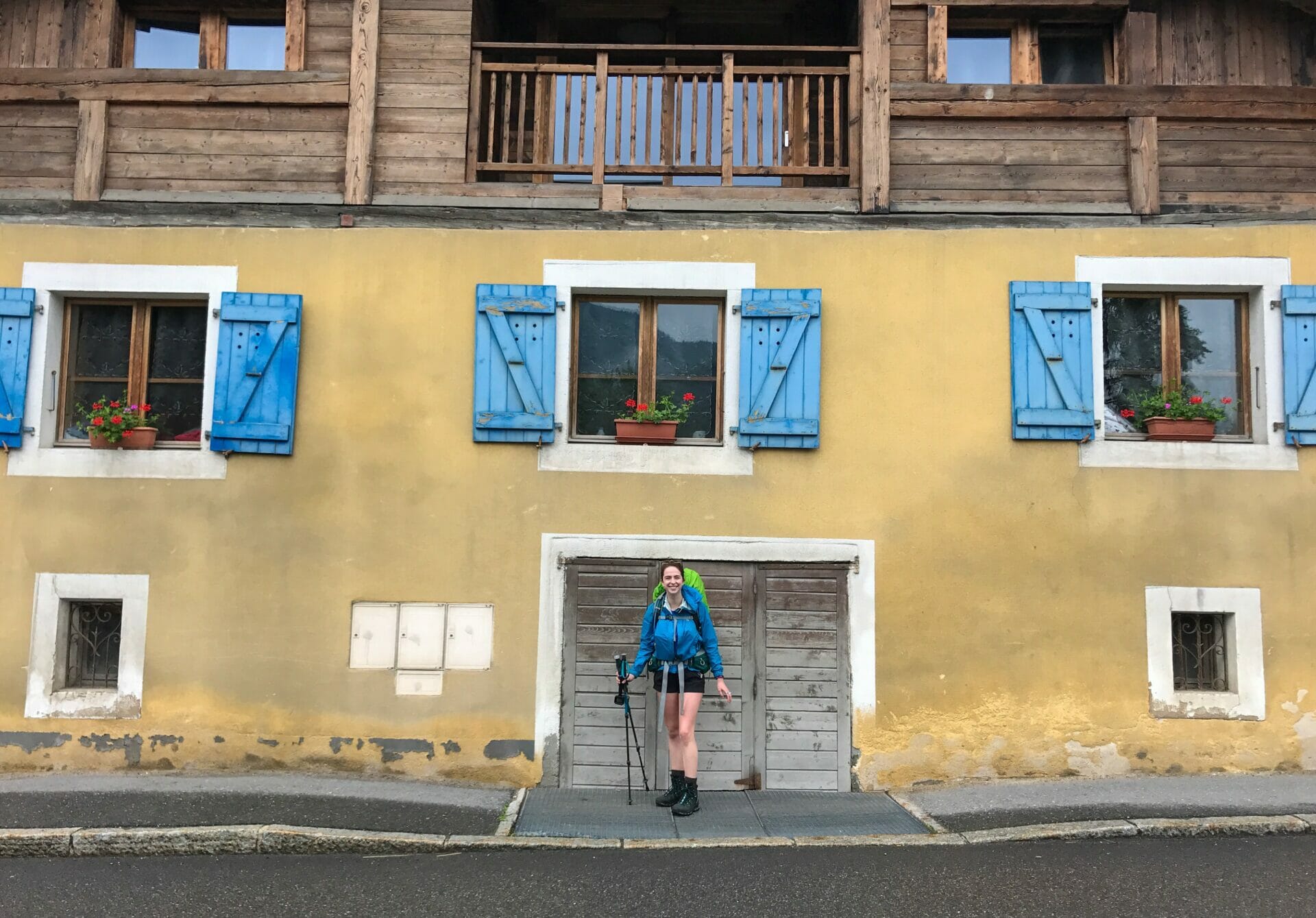
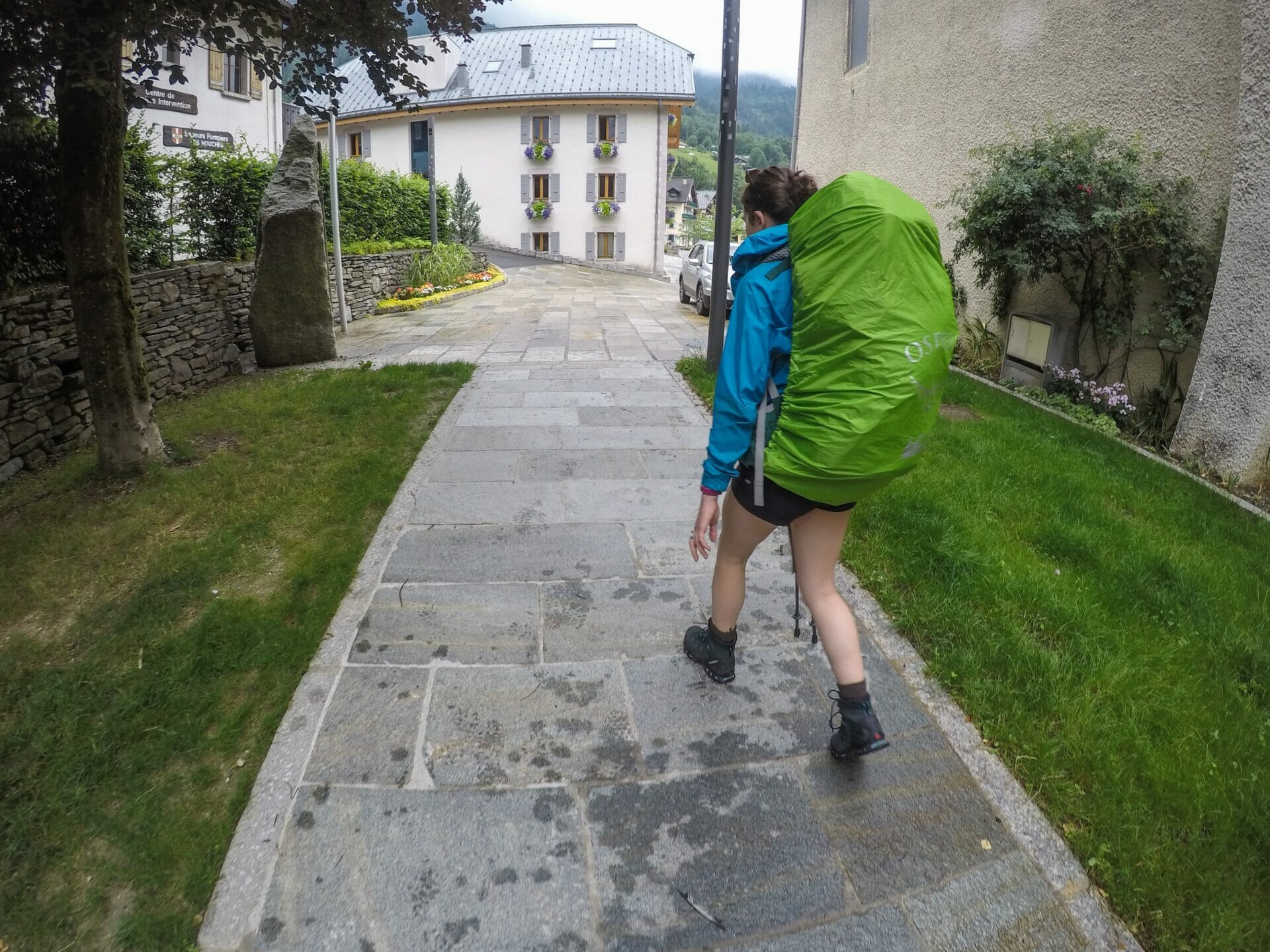
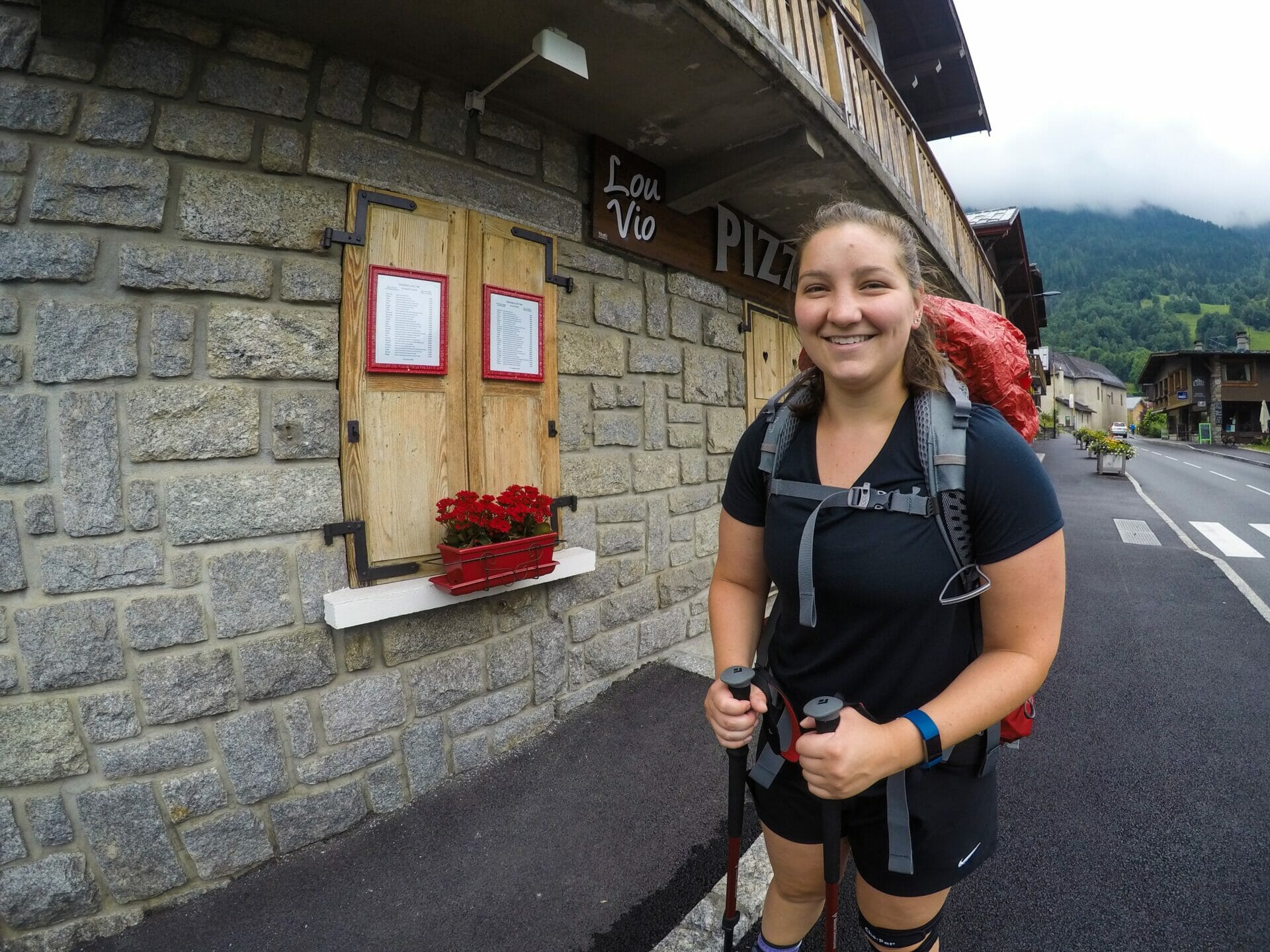
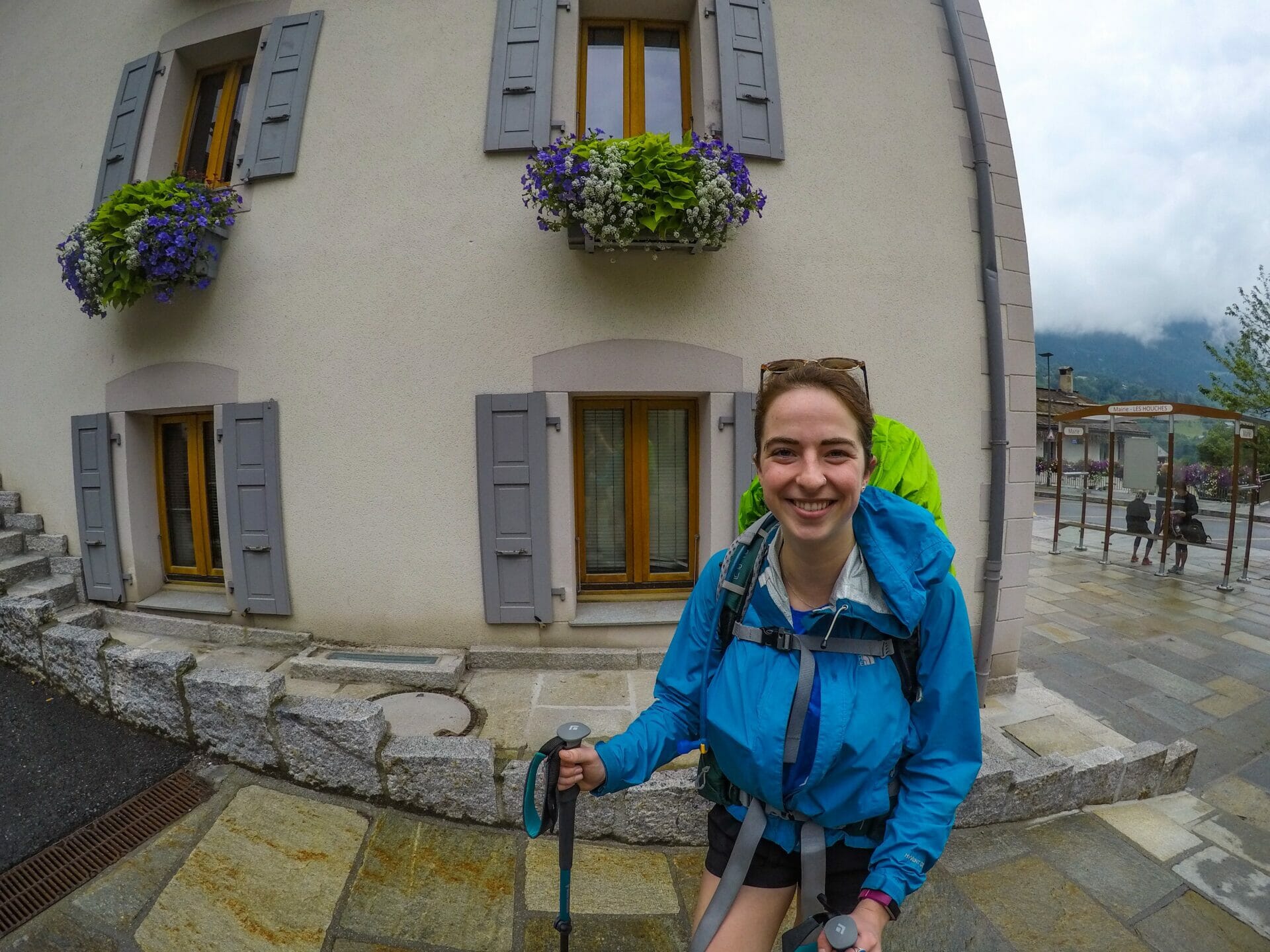
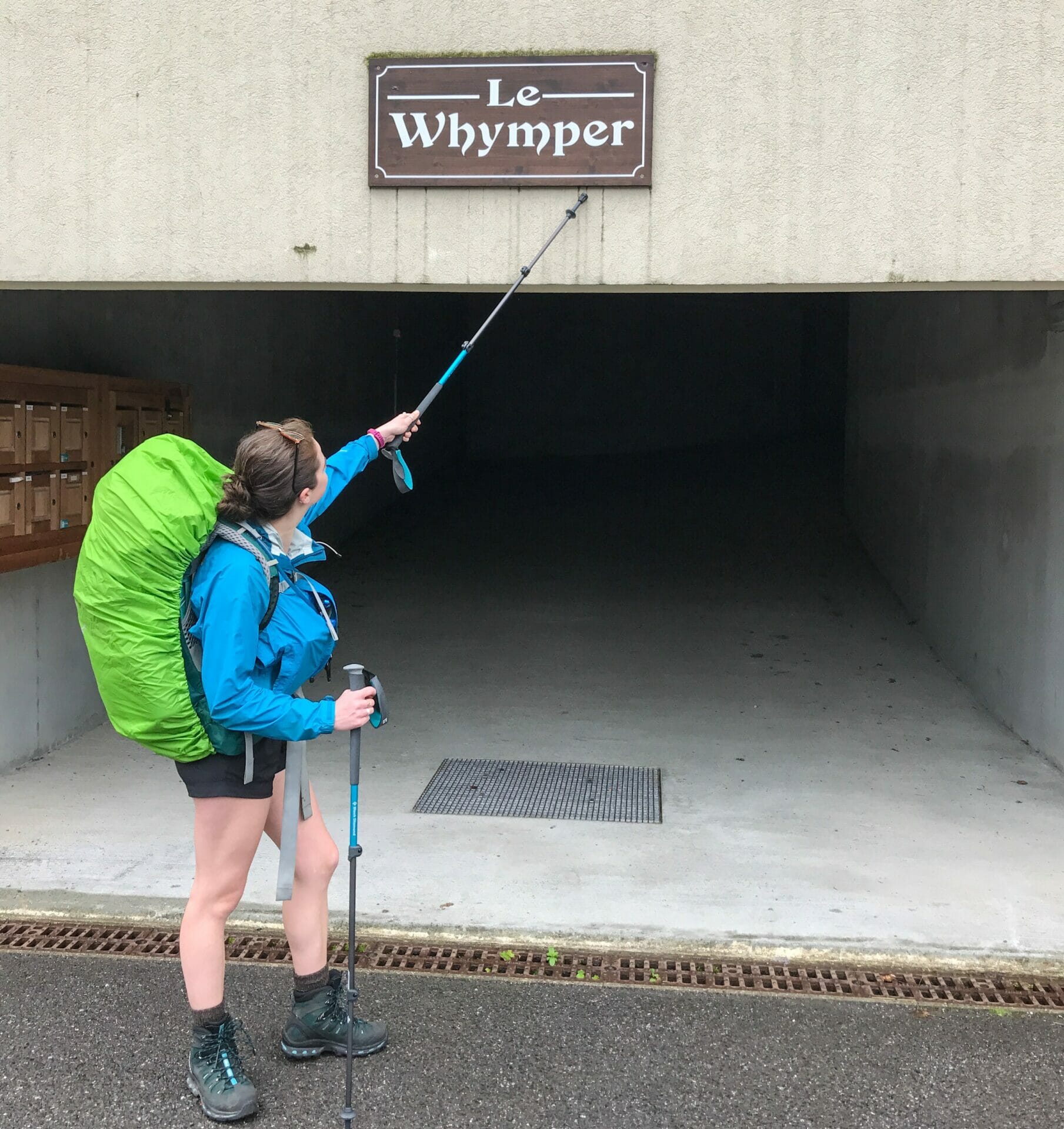
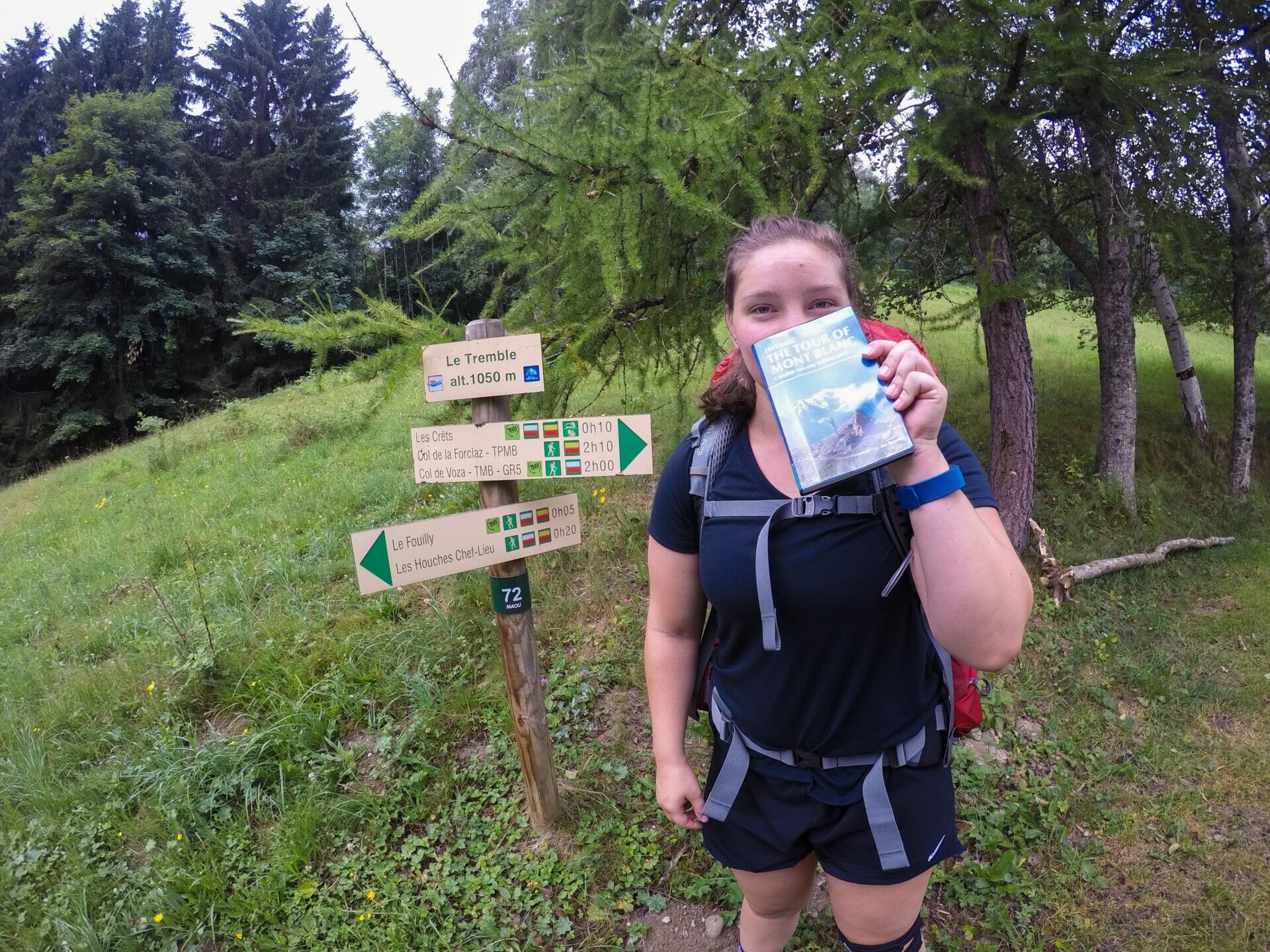
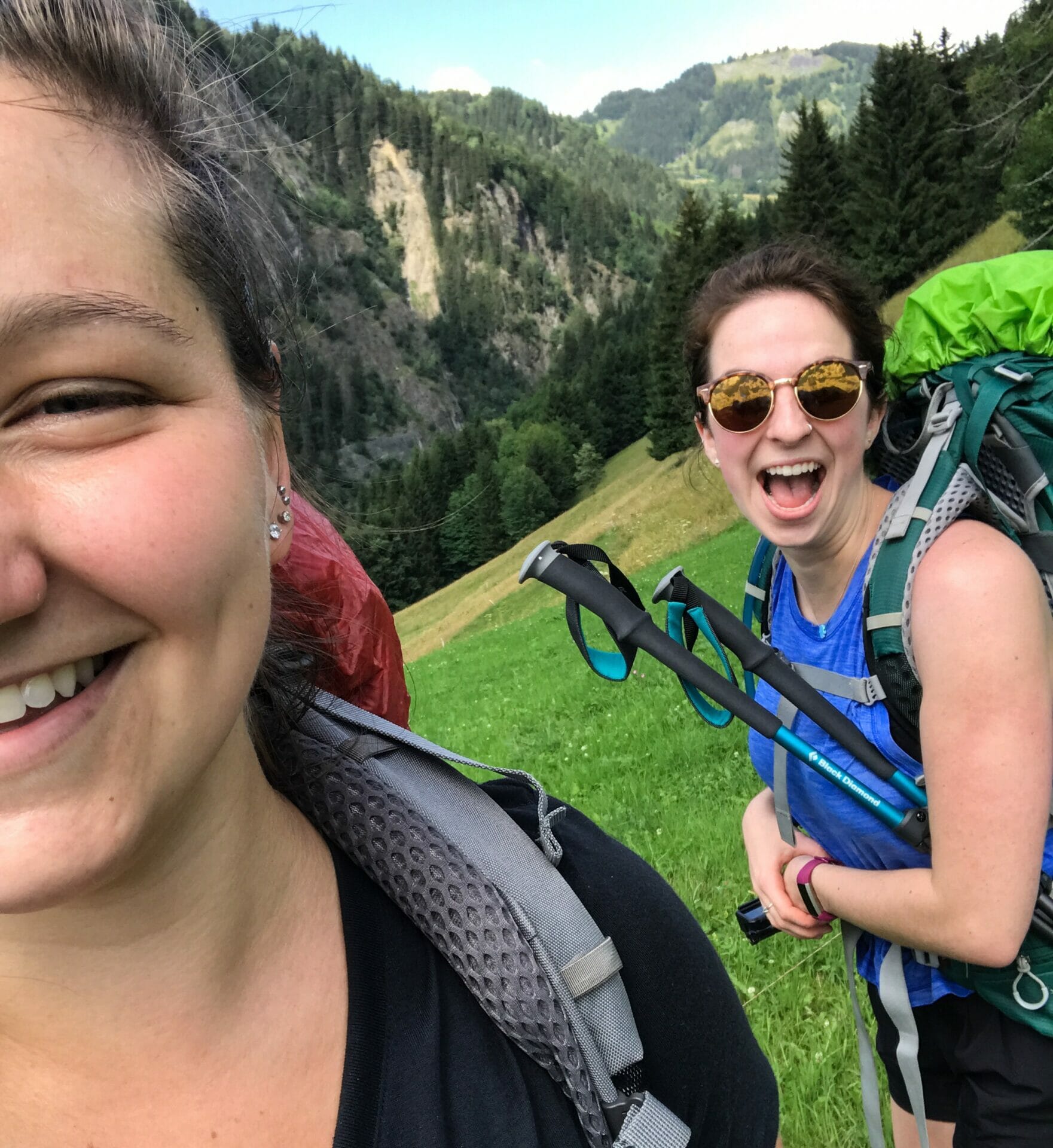

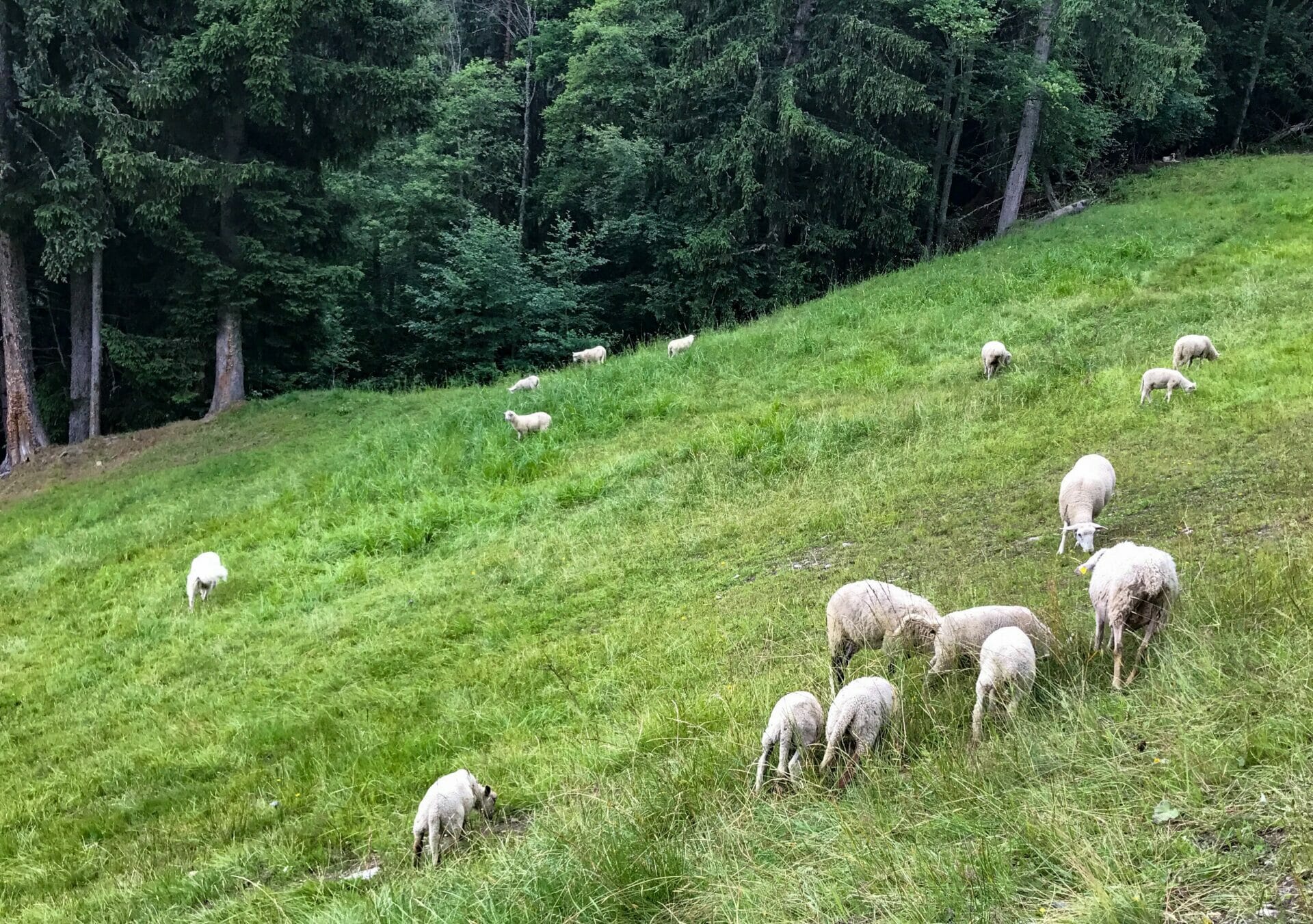
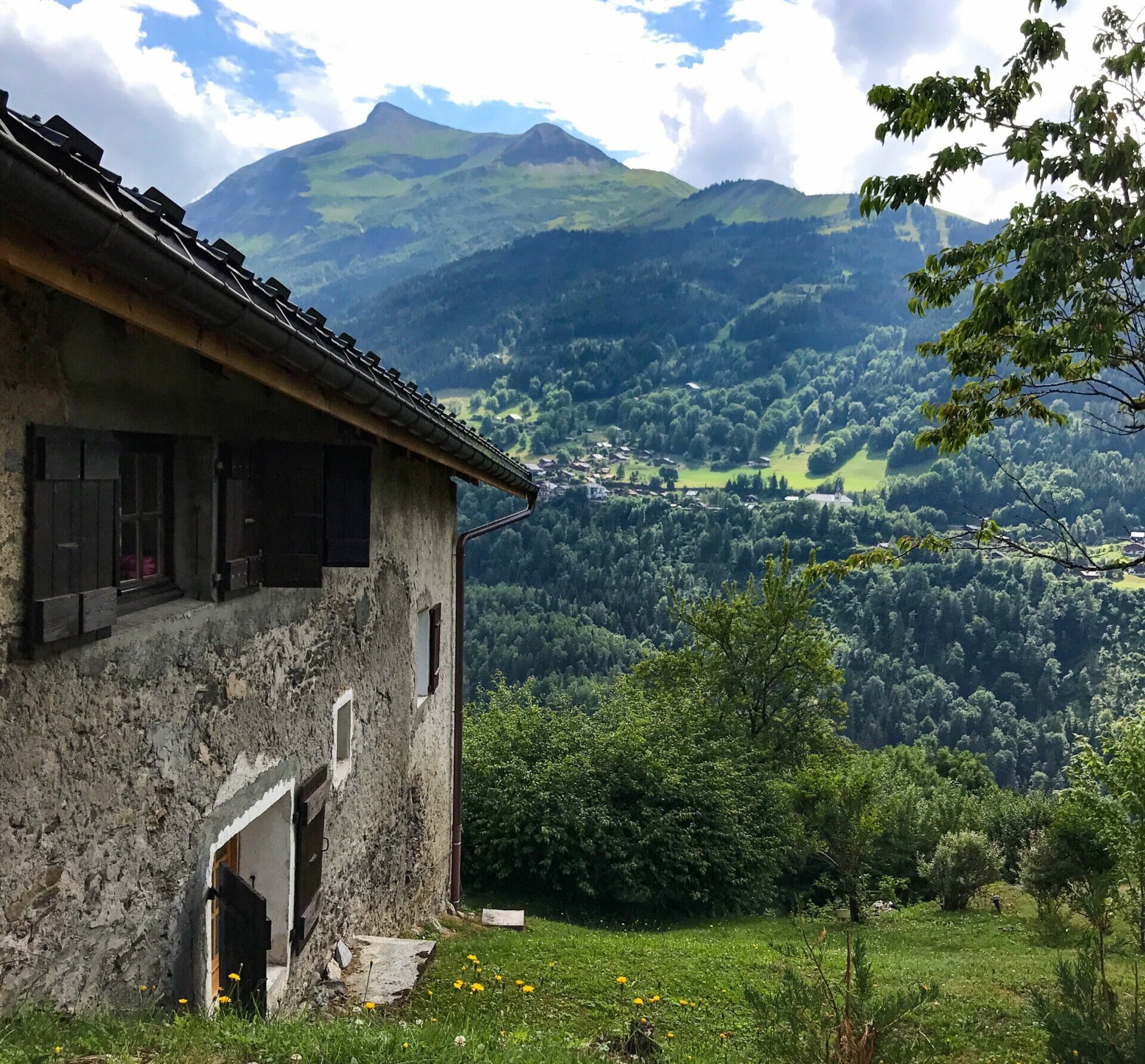
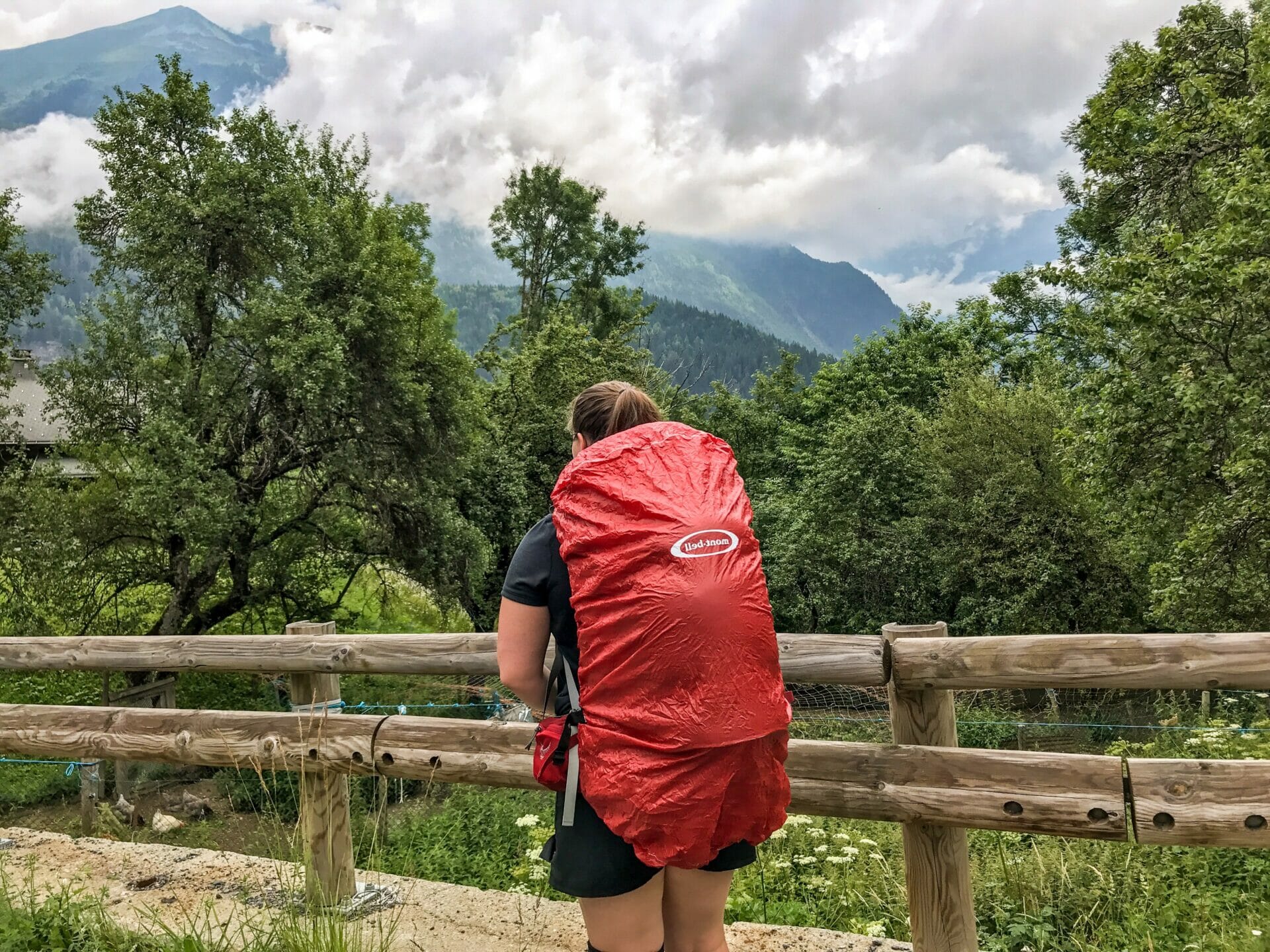
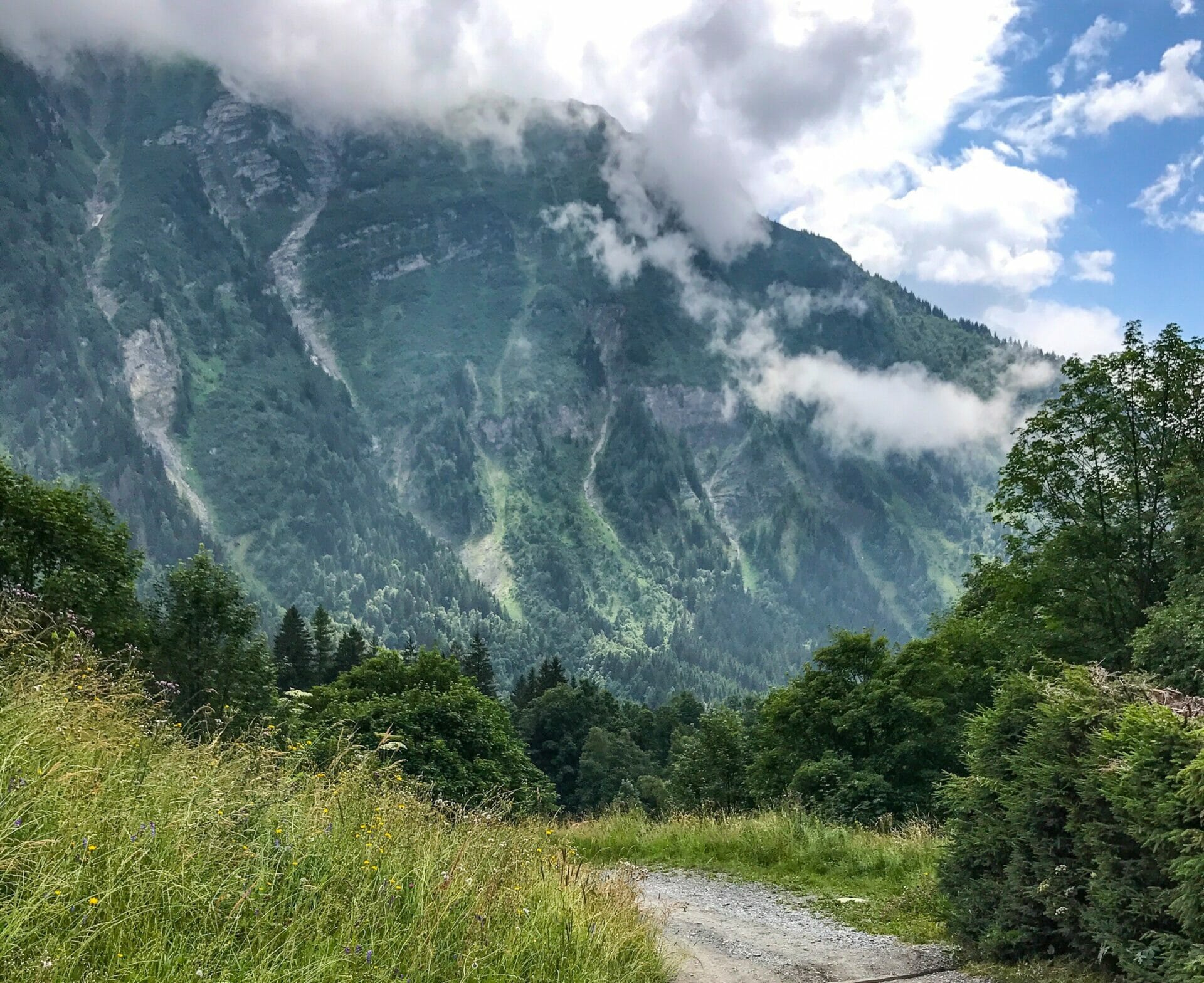
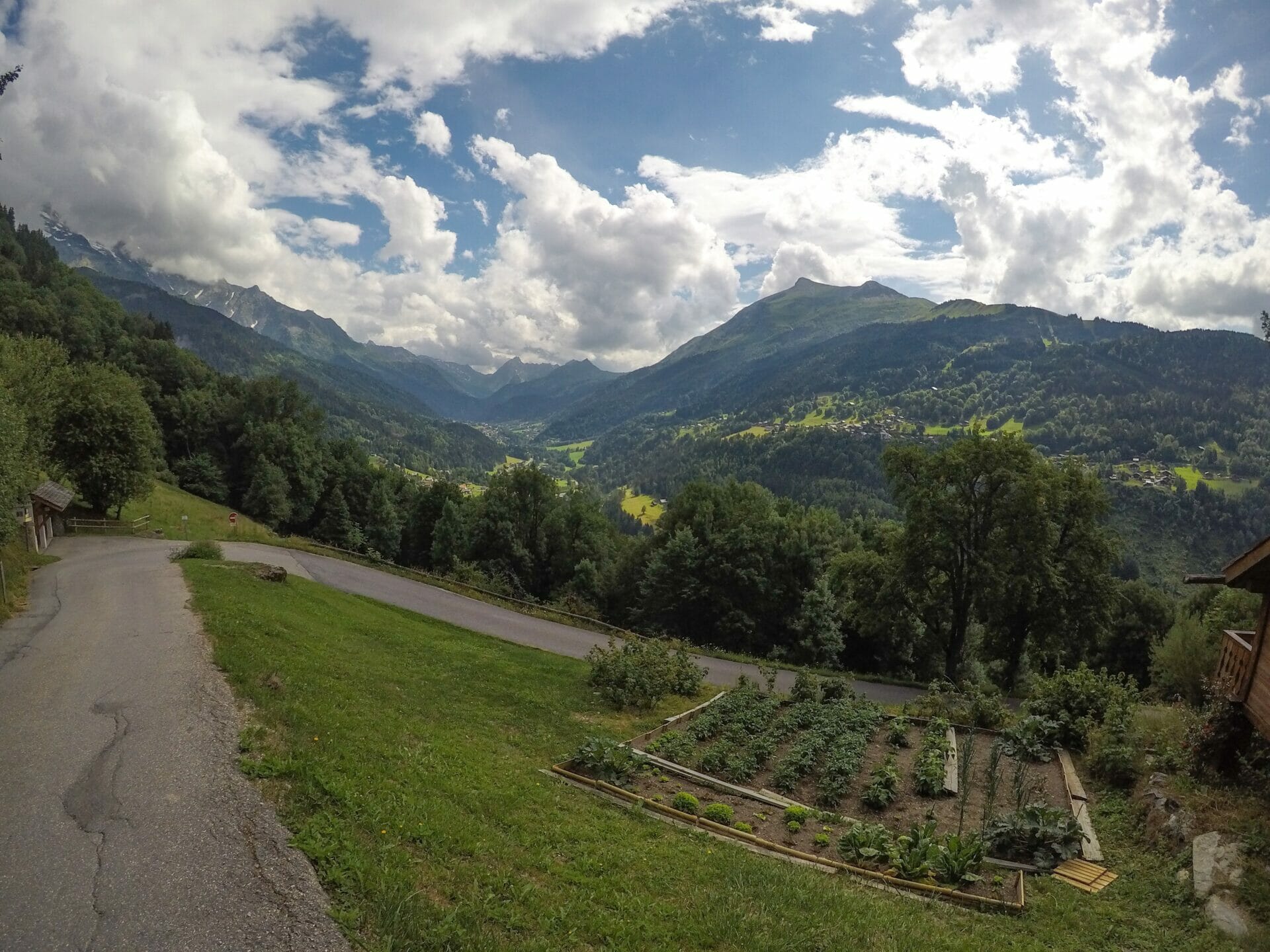
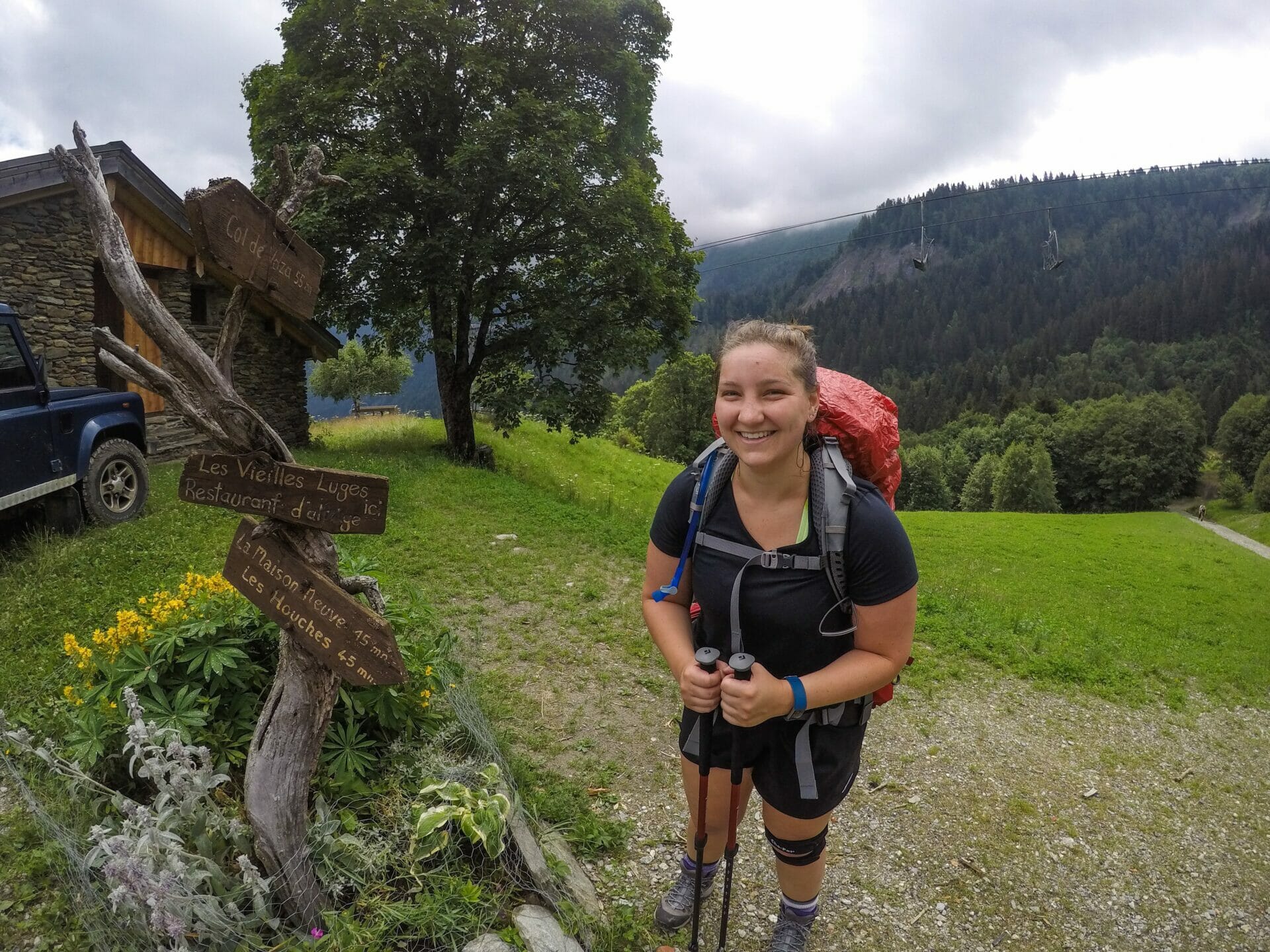
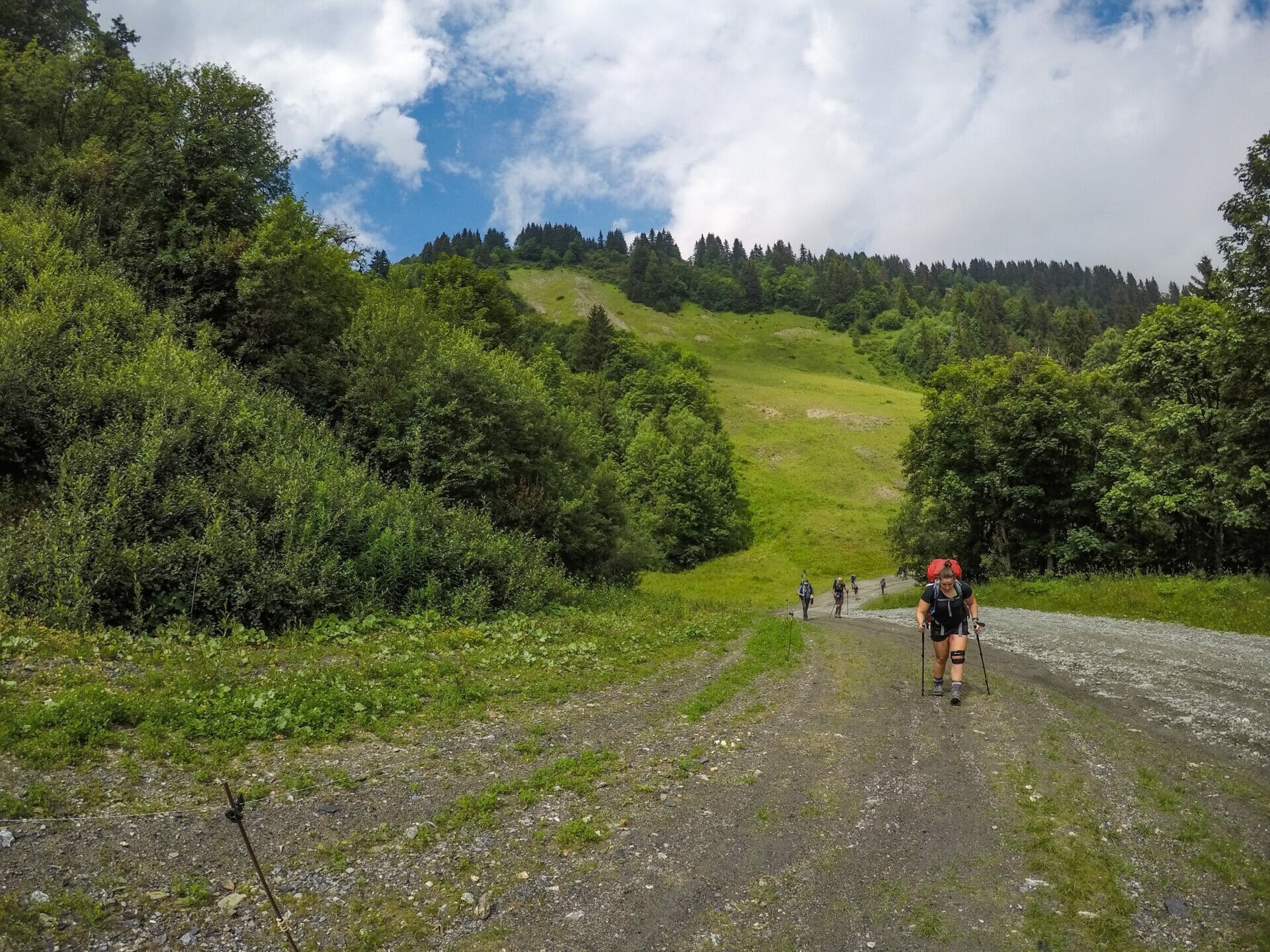
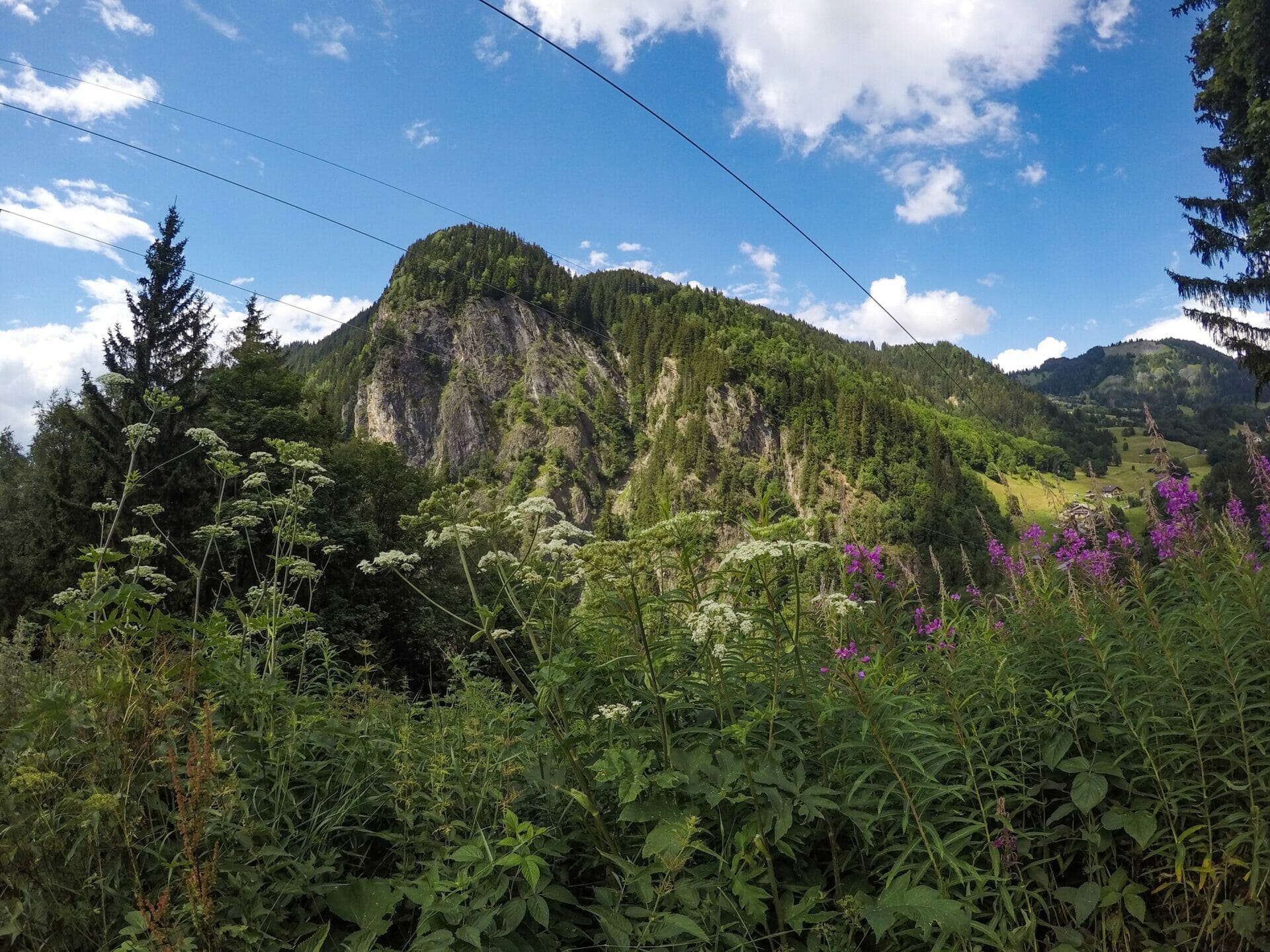
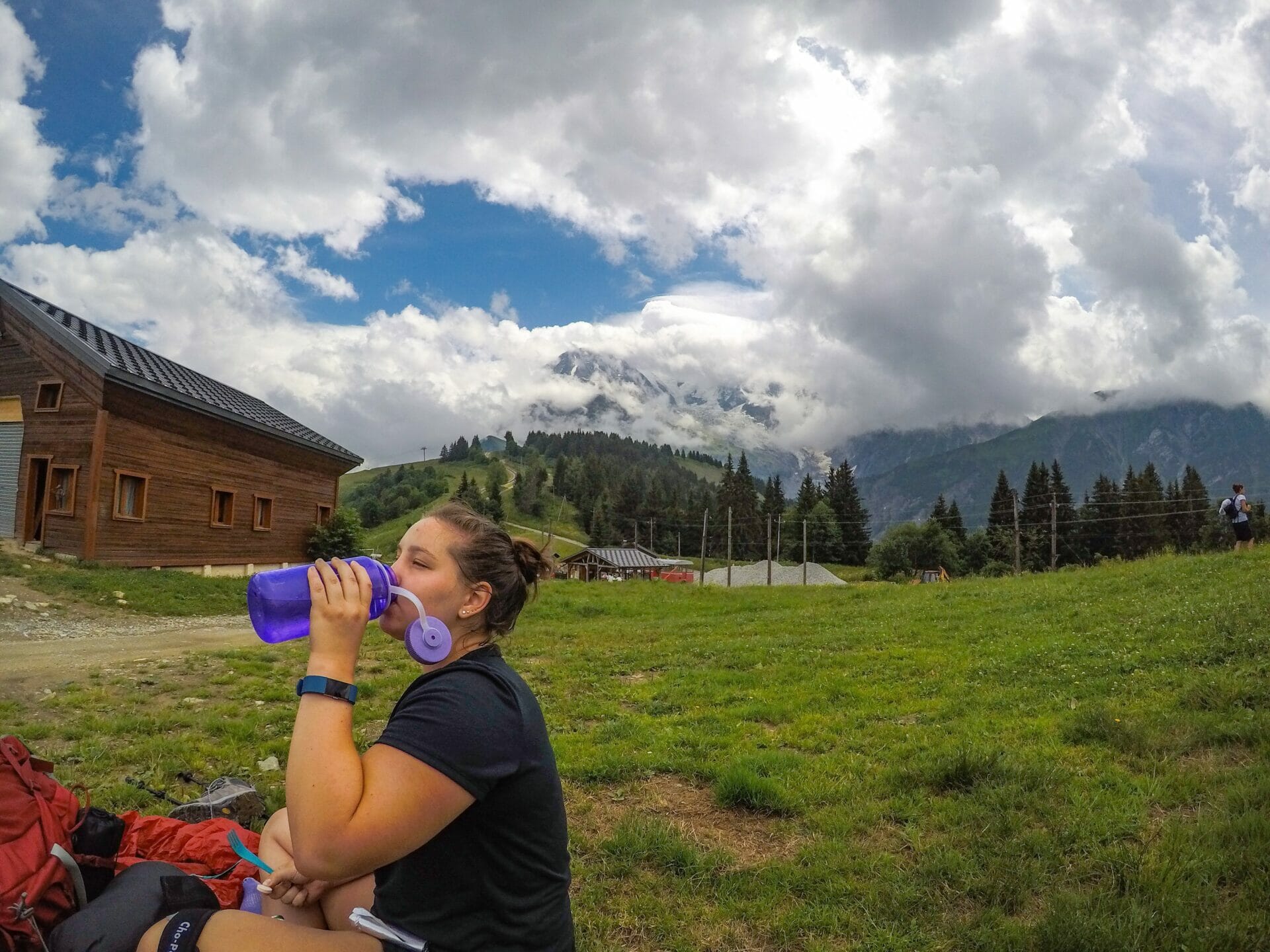
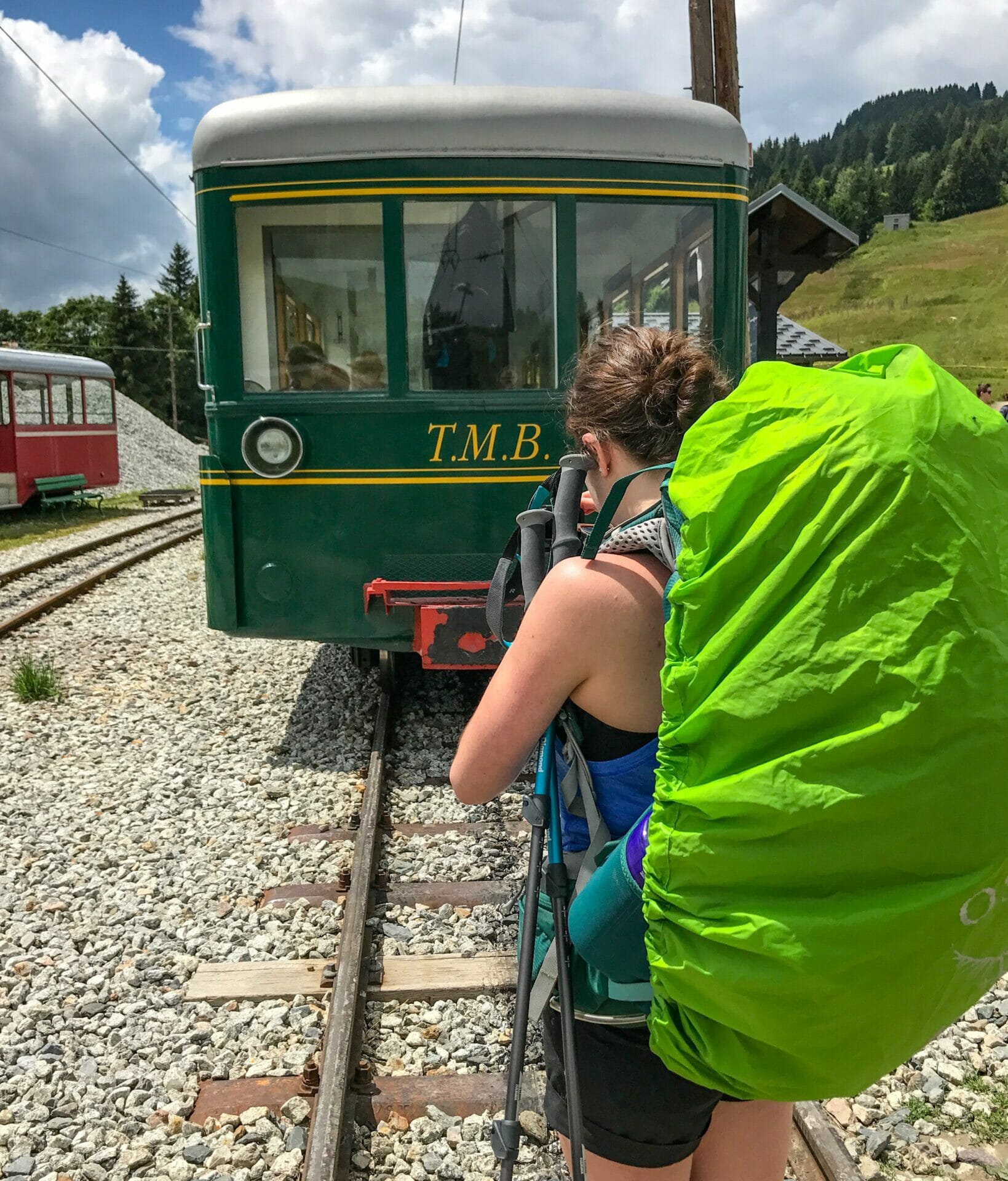
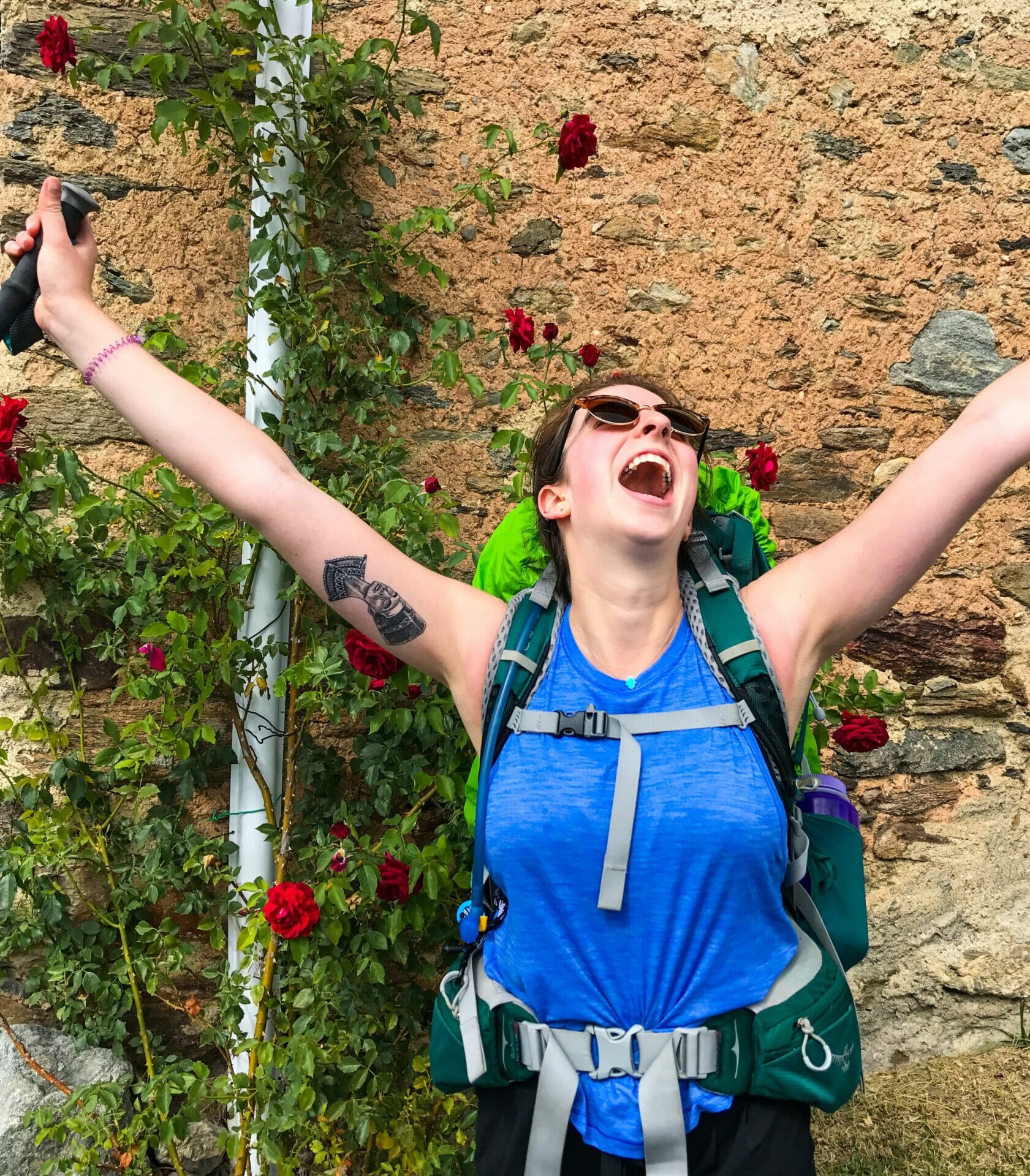
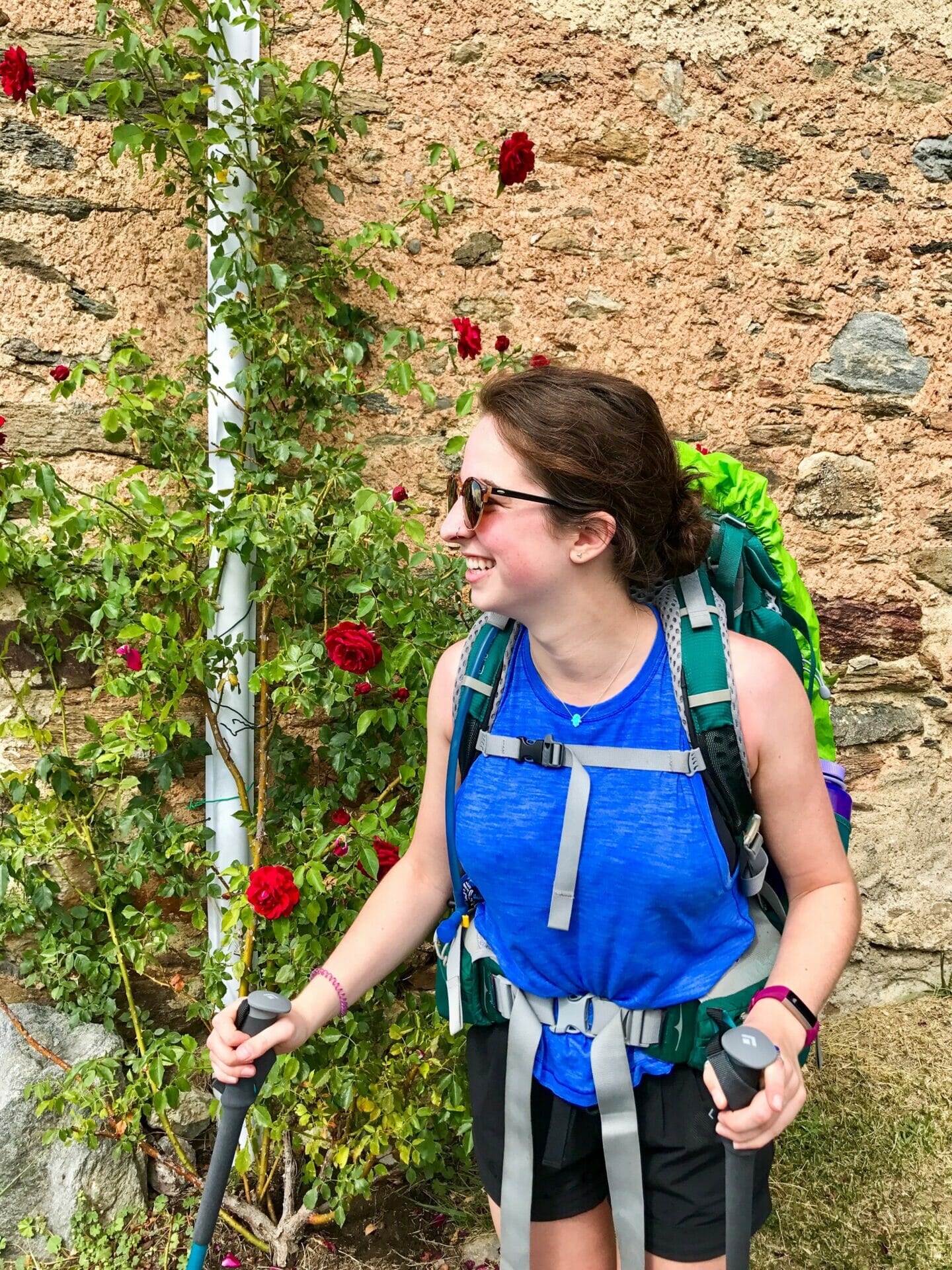
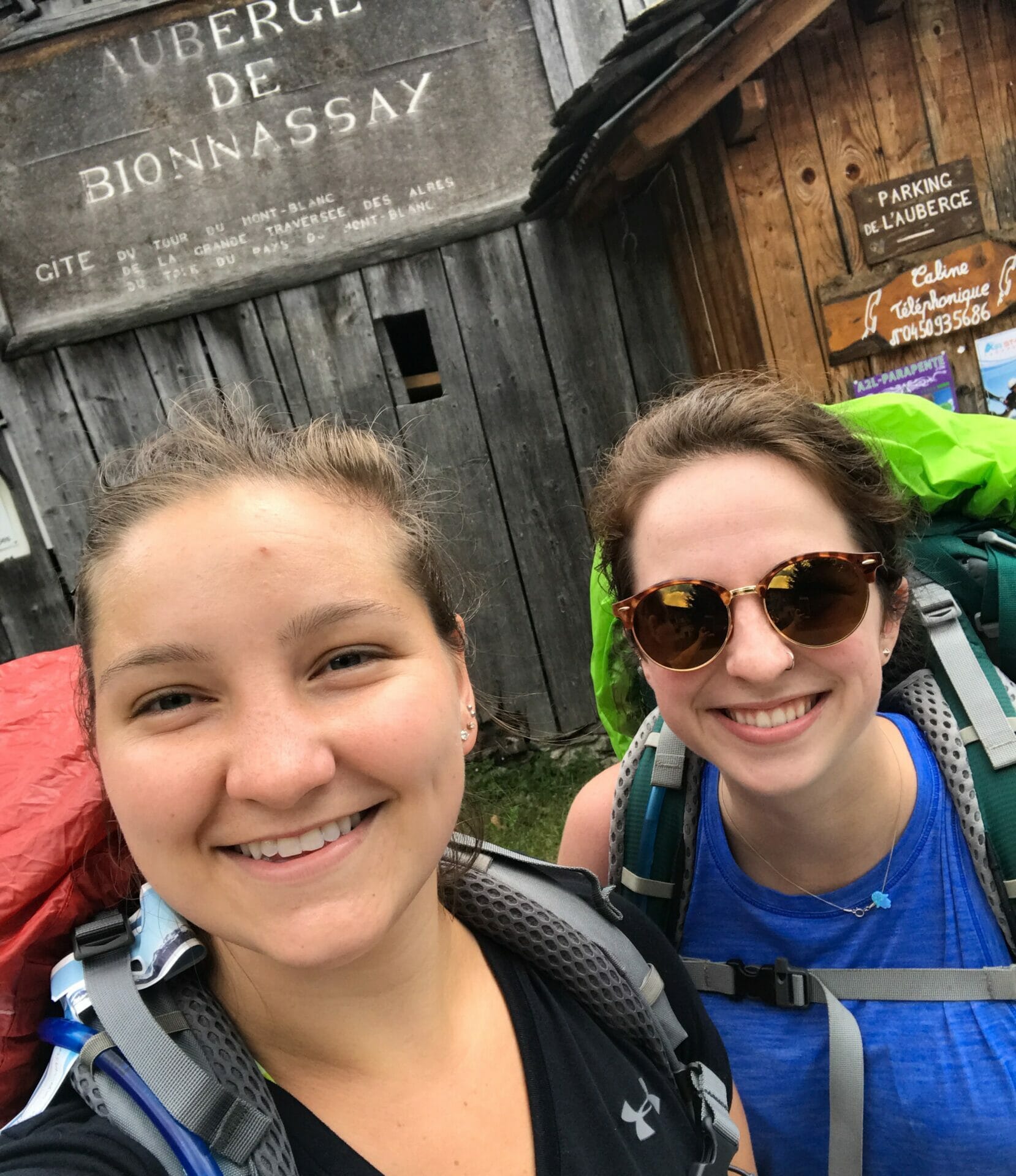
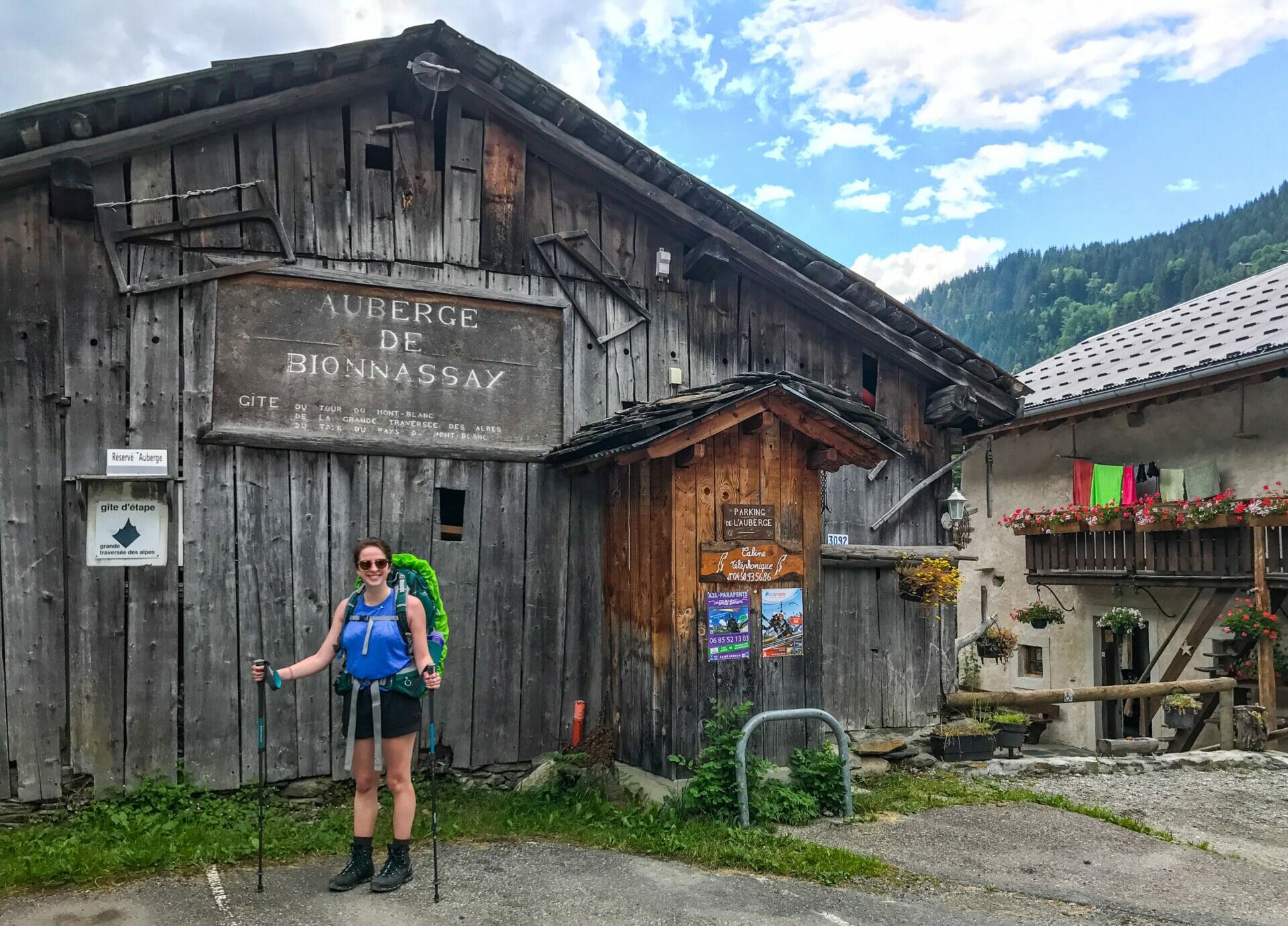
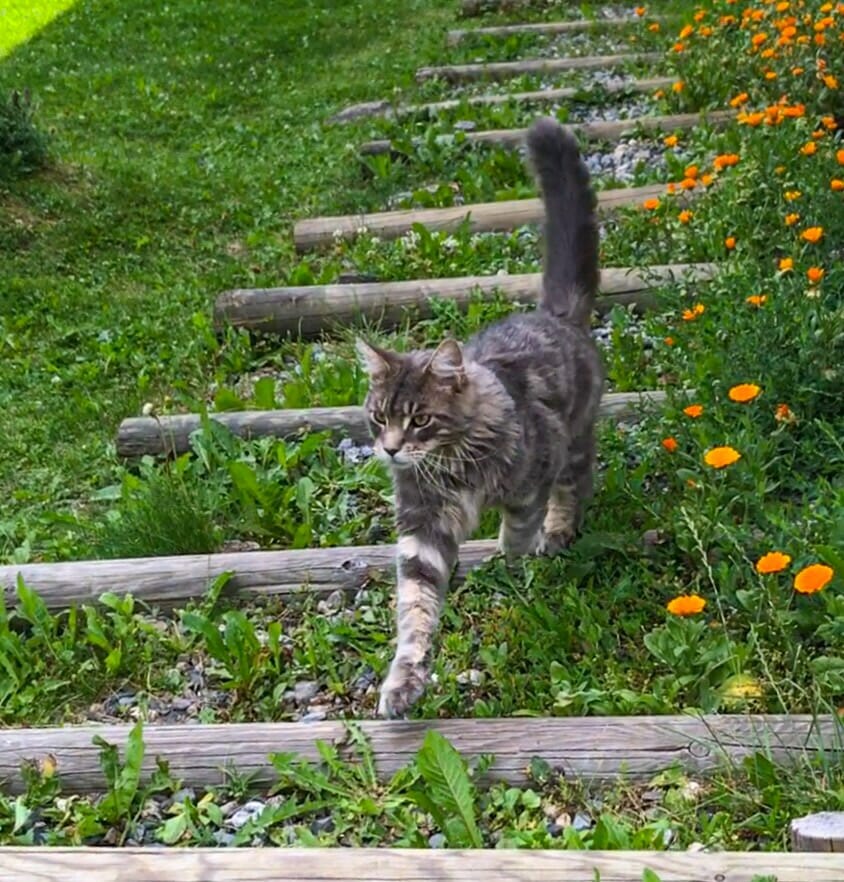
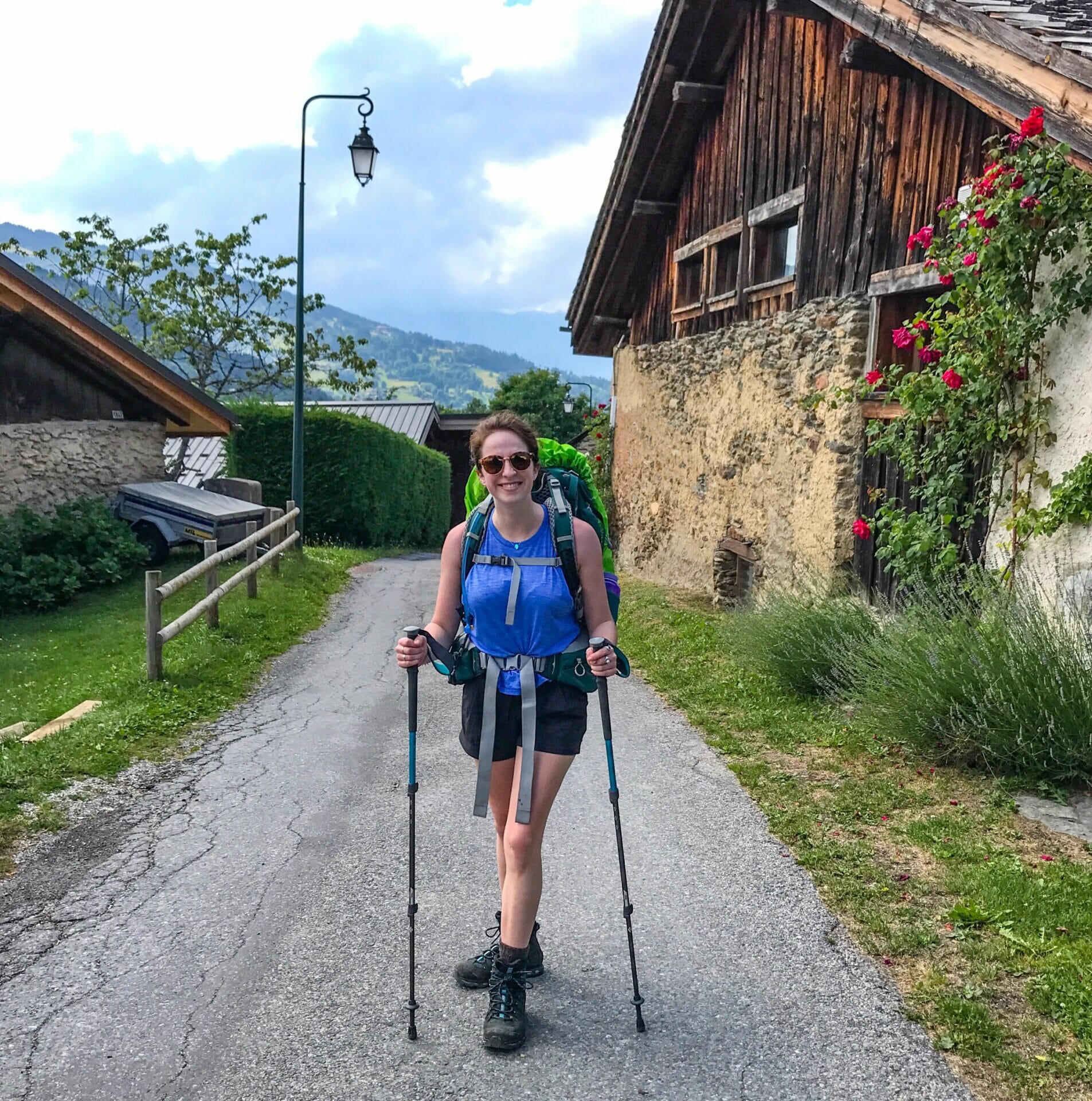
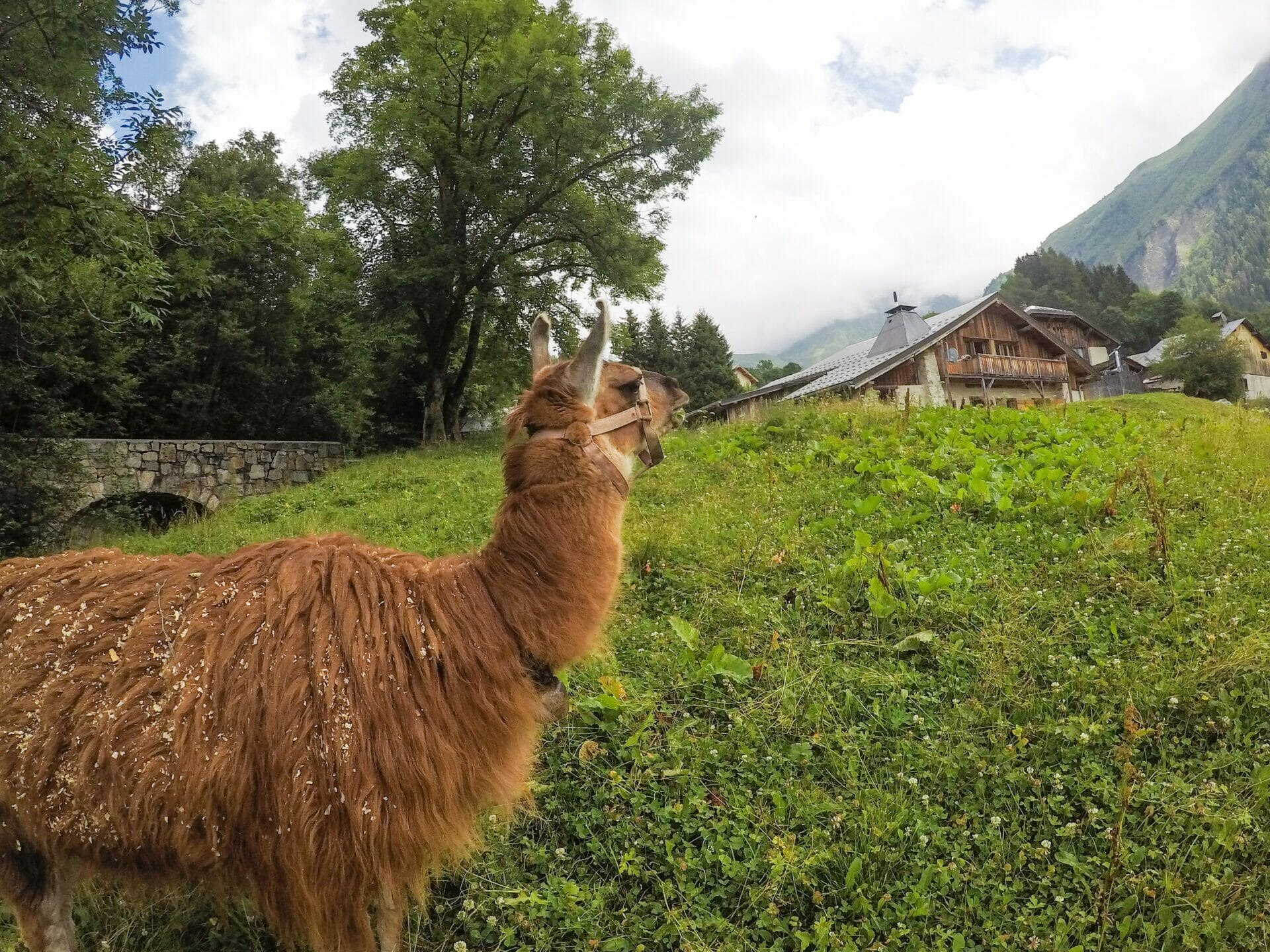
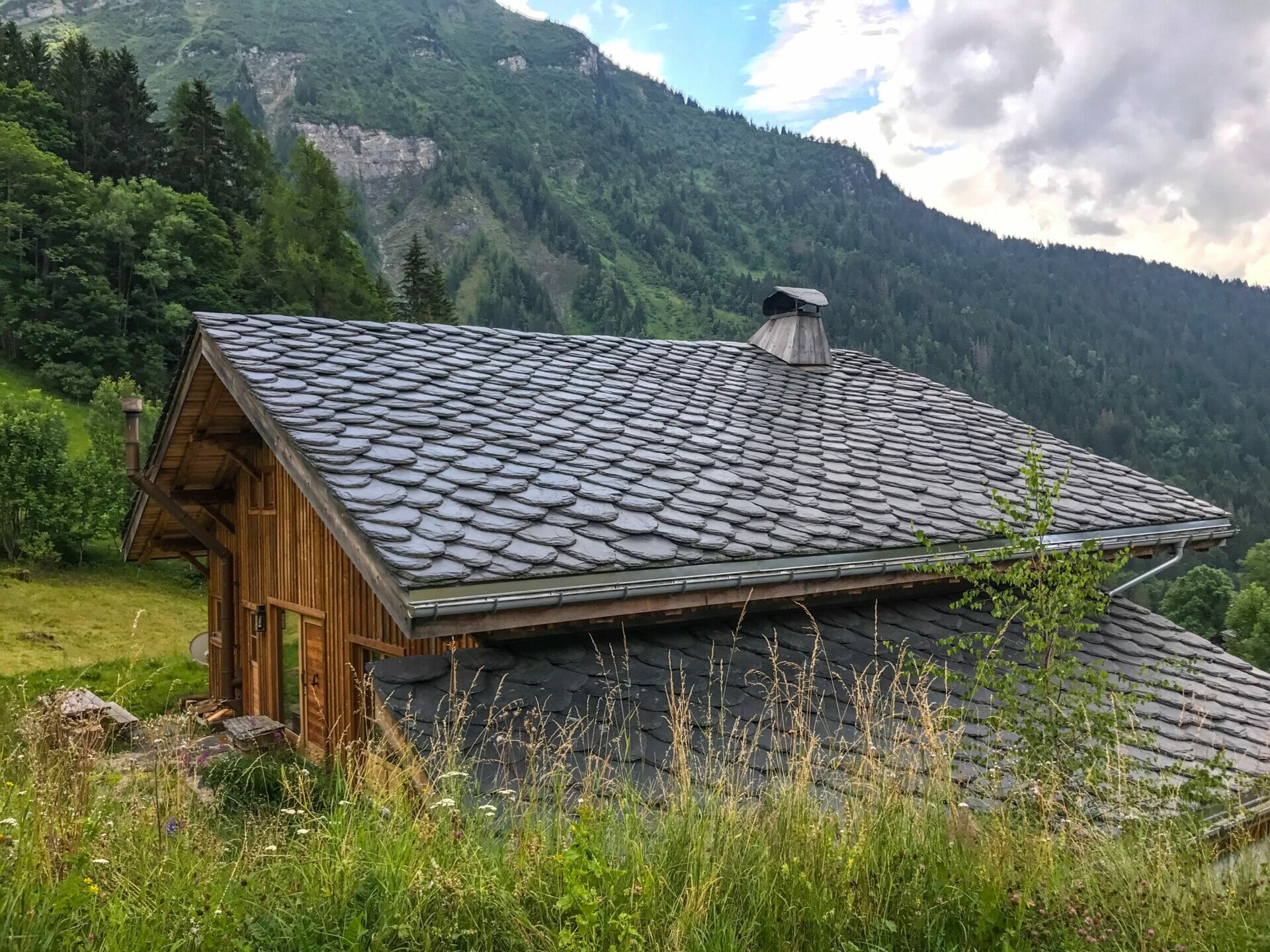
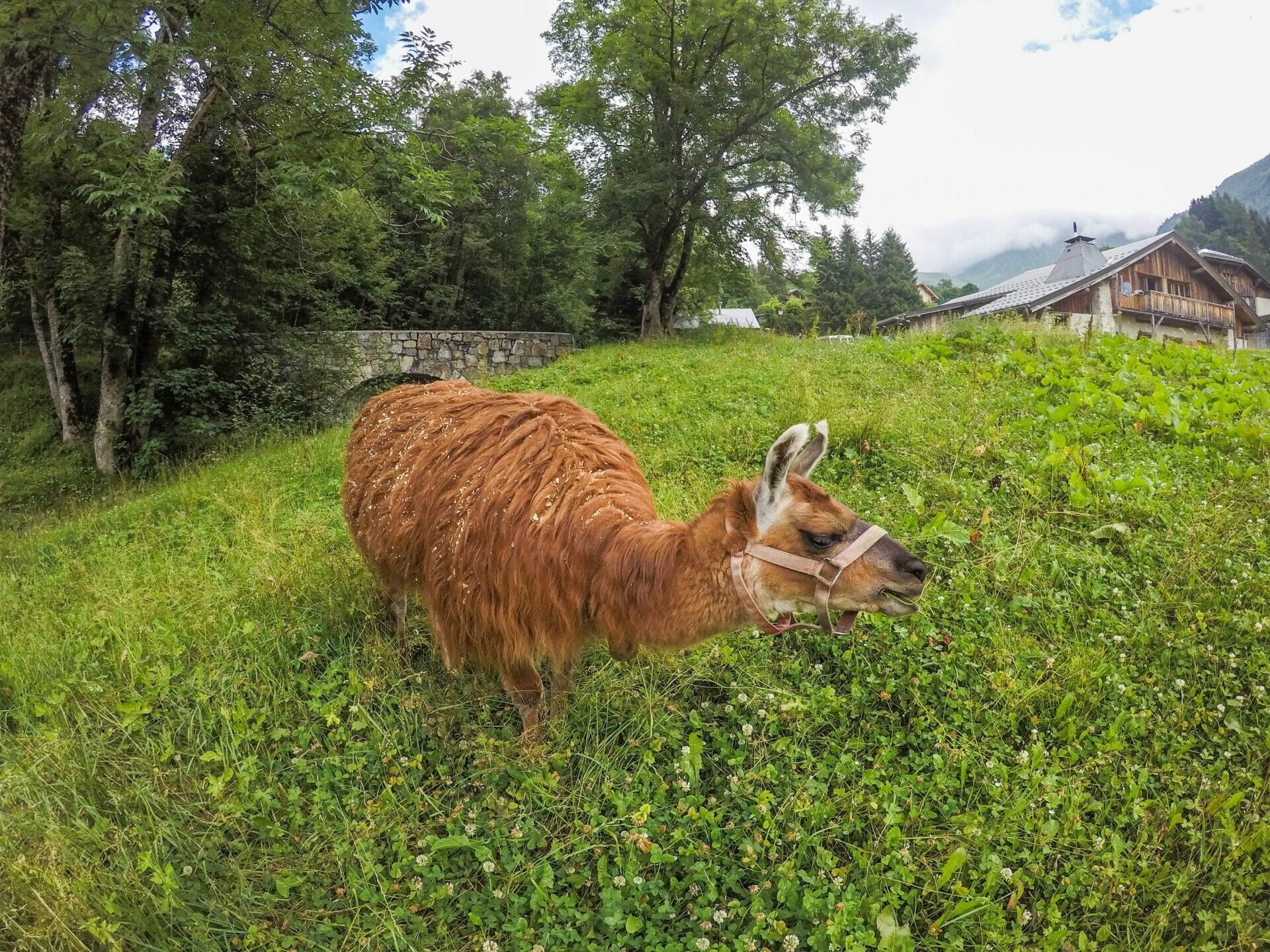
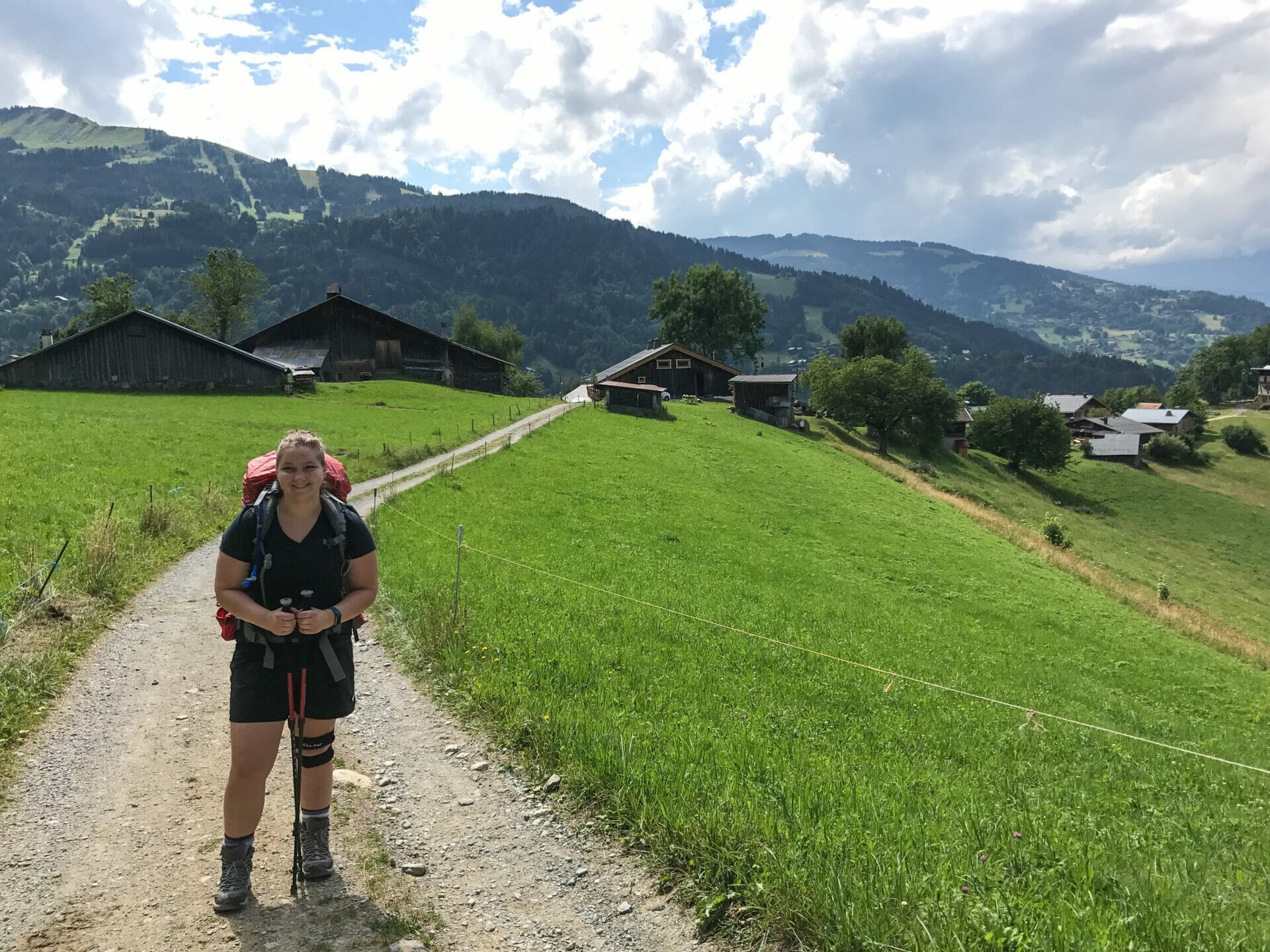

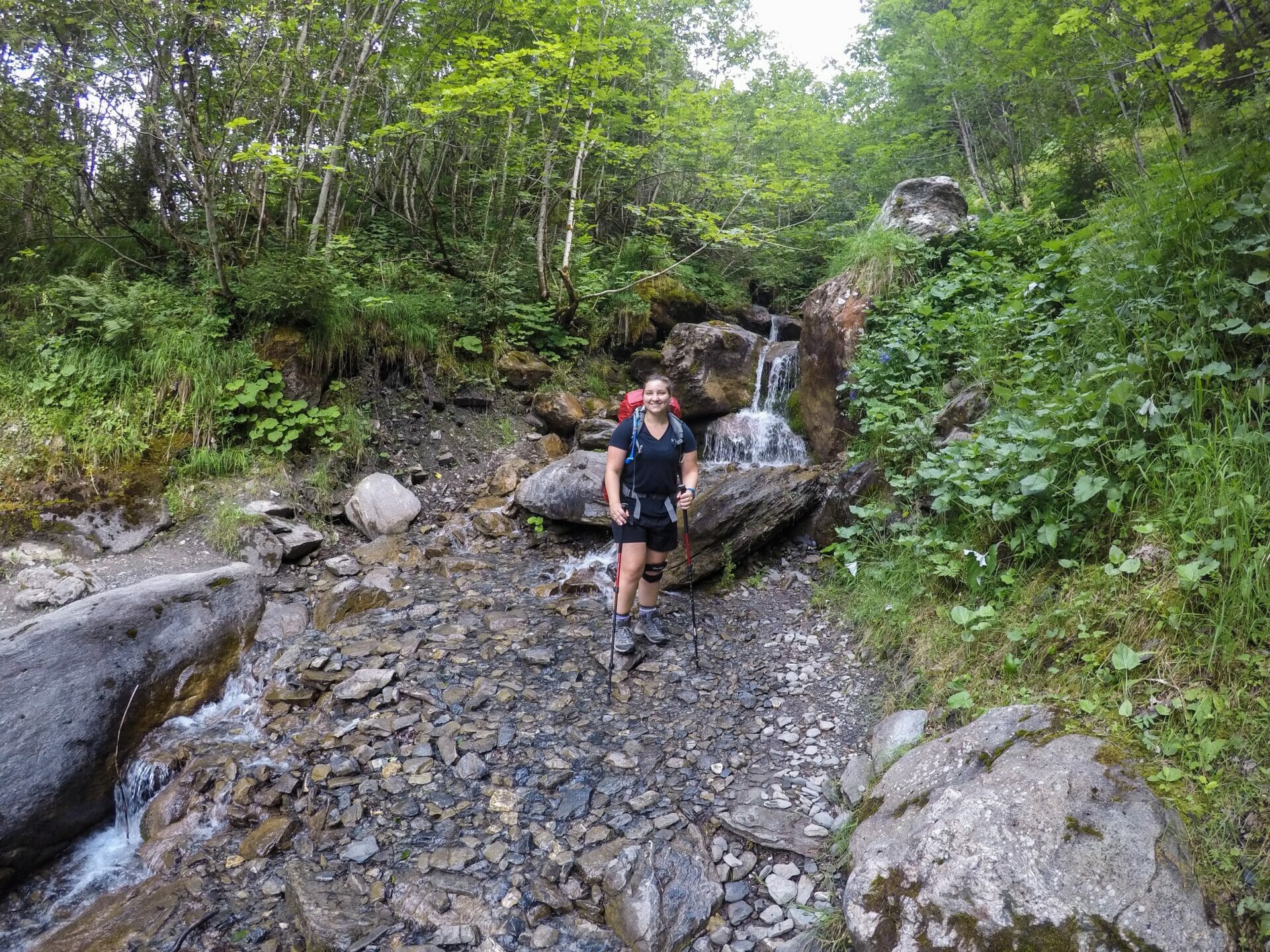
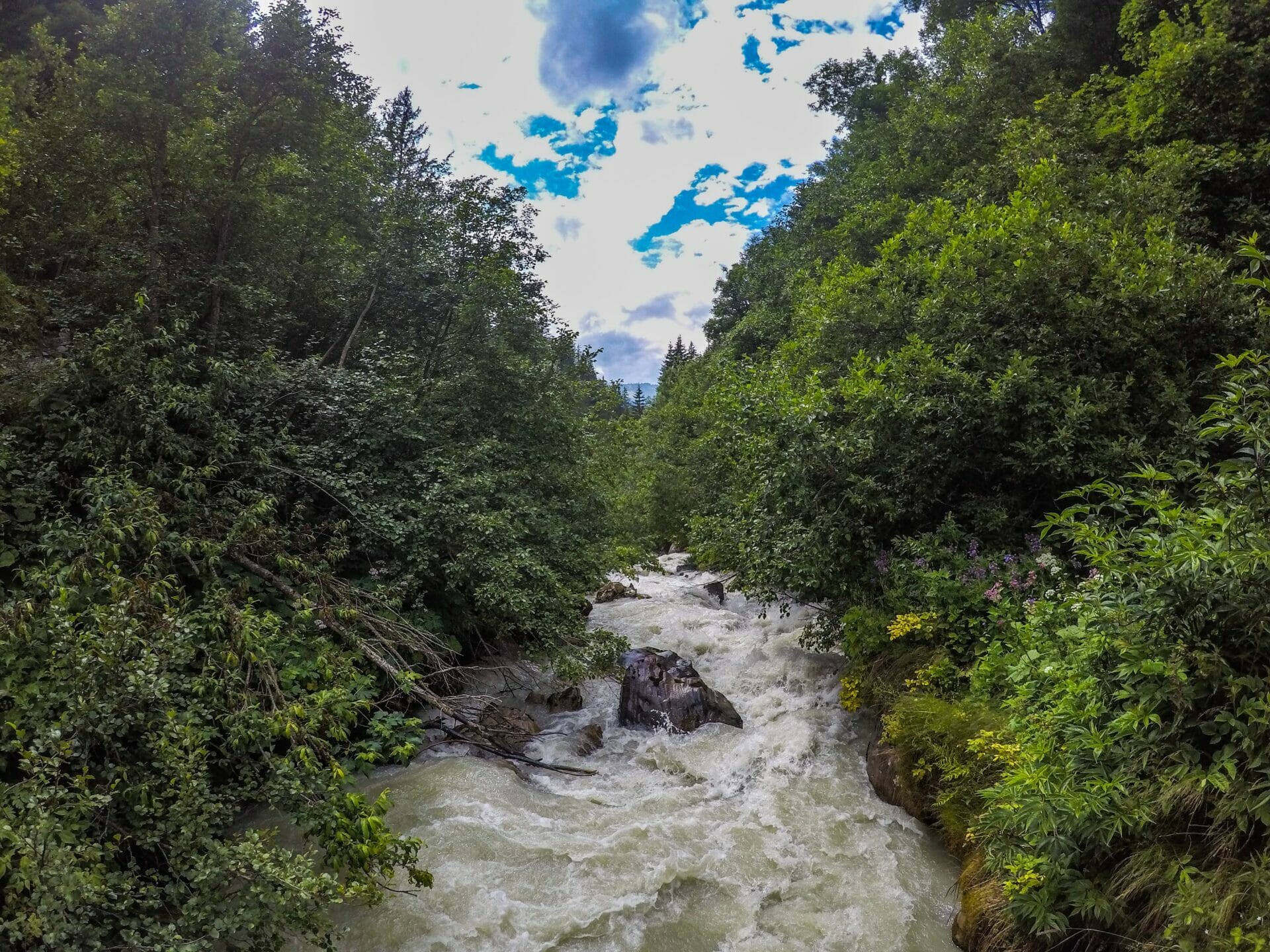

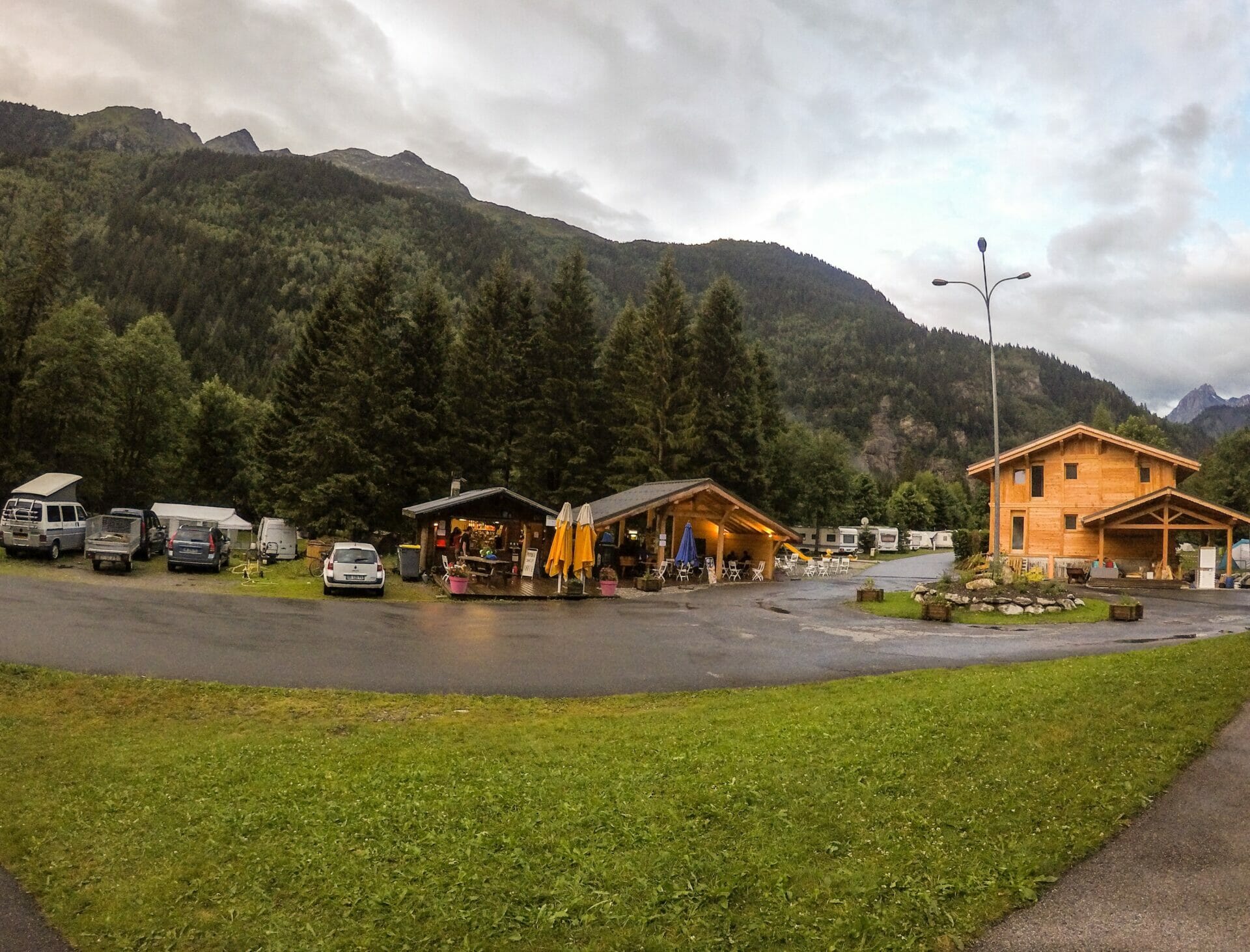
The Comments
ALEX
Brooke – great details, how difficult did you find it to communicate in English? I’m German but speak both German and English fluently. I don’t speak any French or Italian though……….ugh…….do I need to learn some? Thanks in advance 🙂
brooke brisbine
ALEXHi Alex, glad you liked the posts! I have to say, it was exceptionally easy to communicate in English and I didn’t really encounter a single situation on the trail where there was a problematic language barrier. Even the staff taking money at the more out-of-the-way campsites had a rudimentary grasp of English! I’m sure taking the effort to learn some French would be appreciated by the locals, but it is certainly not a necessity.
Enjoy your hike, what a wonderful experience!!
-Brooke
Faye
I enjoy the report
Pieter
Thanks, I’m gonna hike the TMB next summer in the same direction from Les Houches. Thanks for the useful info!
brooke brisbine
PieterHi Pieter, thank you so much for the lovely comment! I hope you have a wonderful time on the TMB, it is truly incredible. You’ll have to let me know what you think after next summer 🙂
Happy hiking,
Brooke
Emory
I was able to find good information from your articles.
brooke brisbine
EmorySo glad to hear that! I hope you enjoy the hike, it is truly spectacular.
Michael
Fantastic material. With thanks! https://bucketlist.org/idea/6LiG/ideas-to-assist-properly-deal-with-nervousness/
The Ultimate planning guide for hiking the Tour du Mont Blanc – brooke around town
[…] Day 1: Les Houches – Les Contamines […]